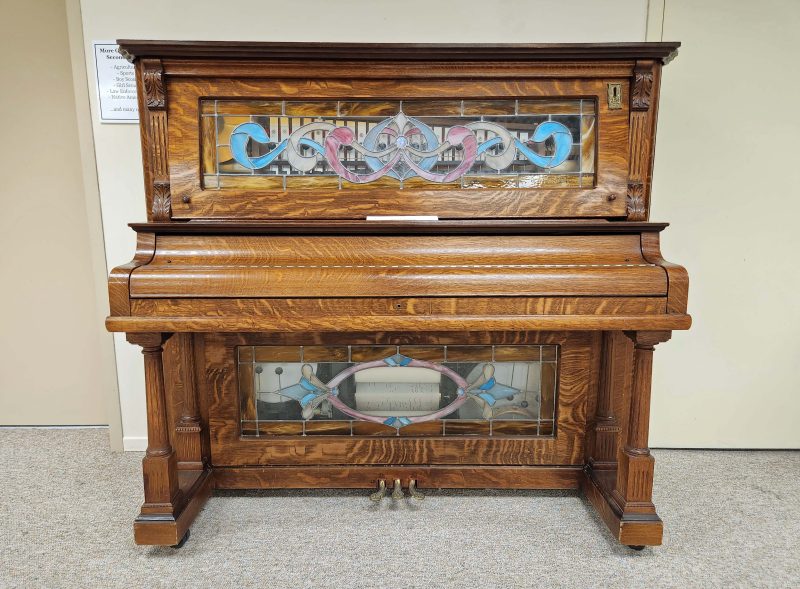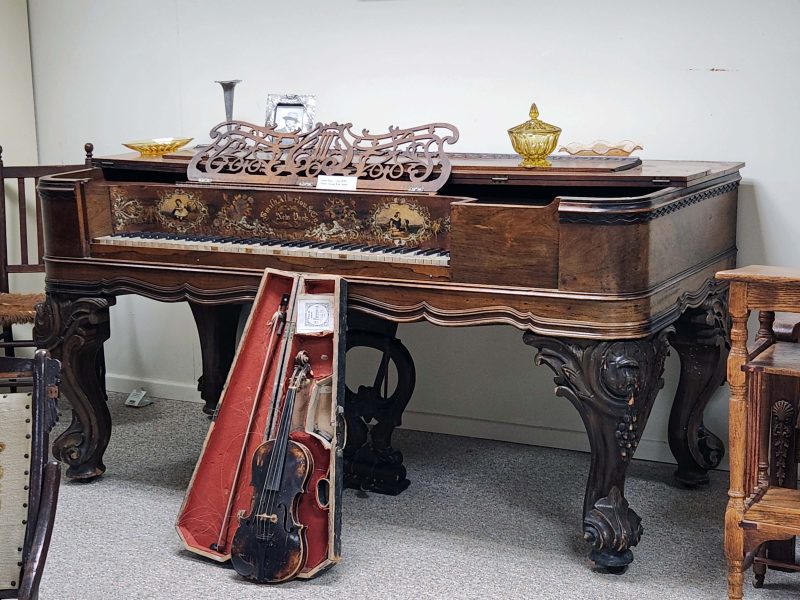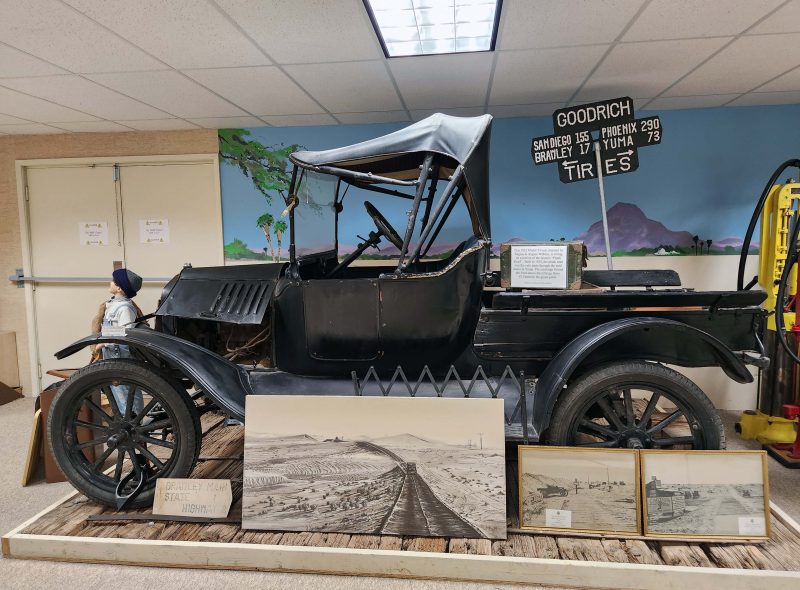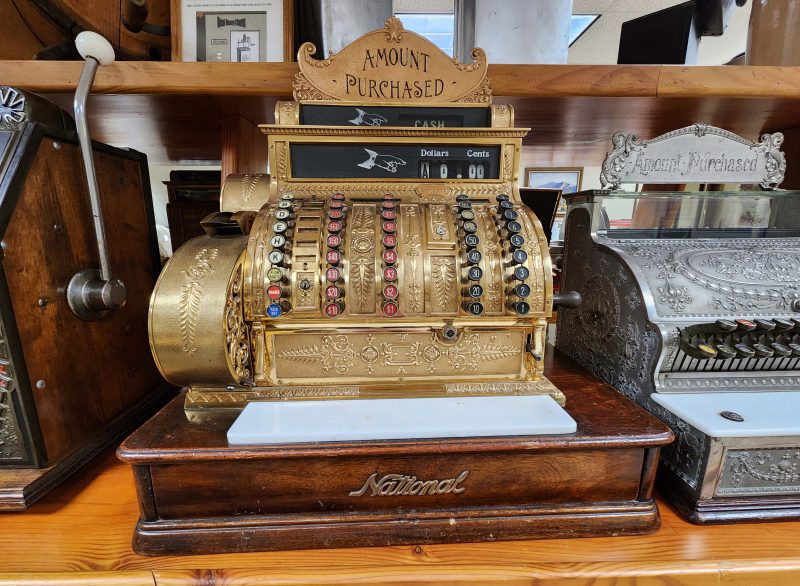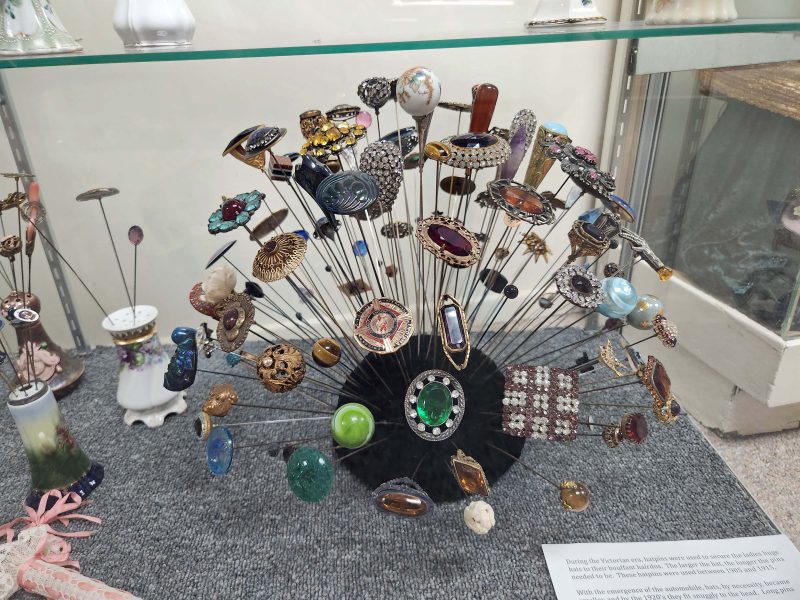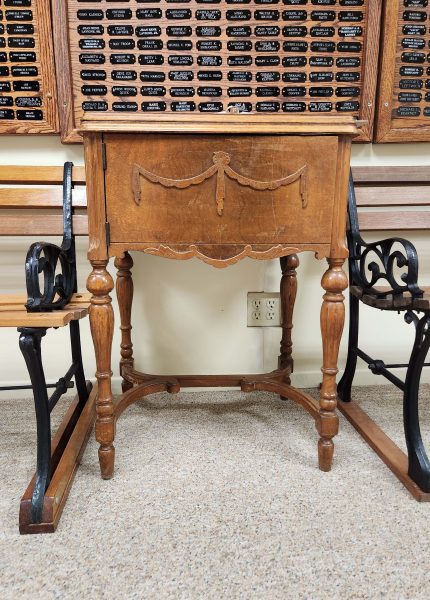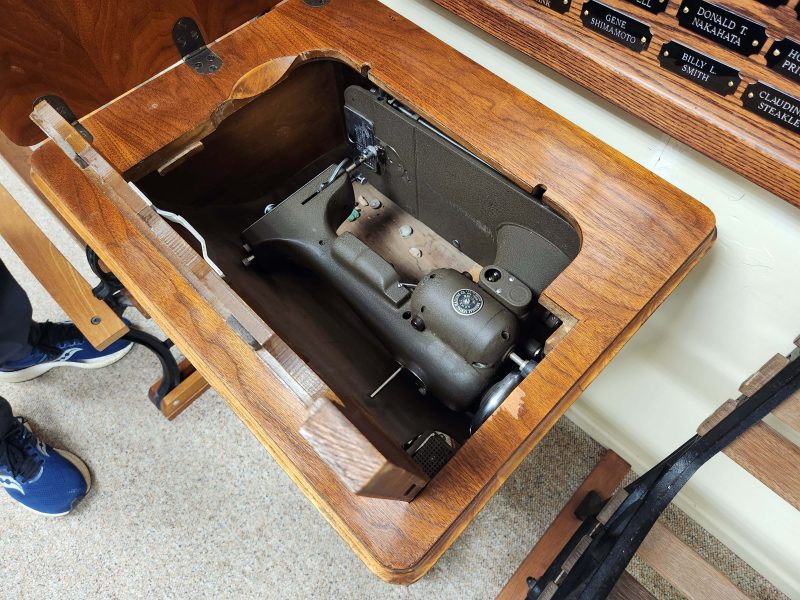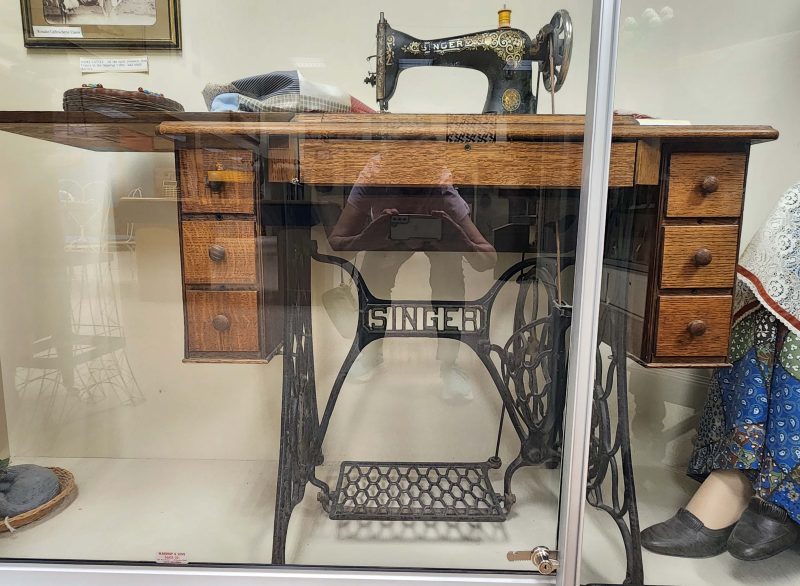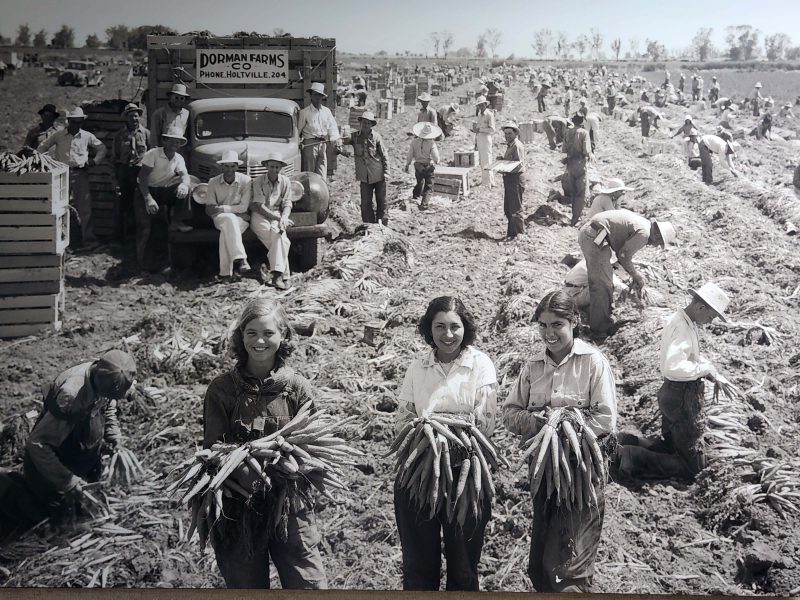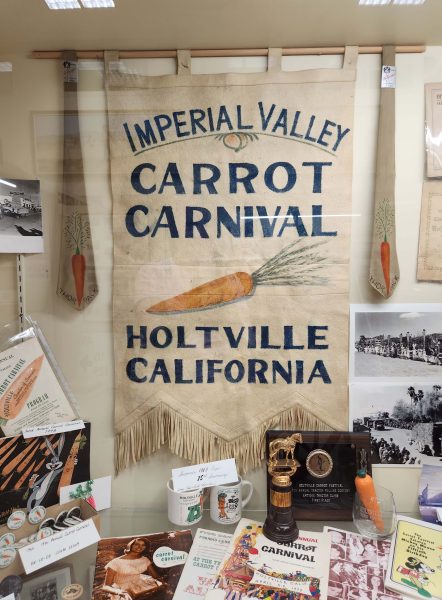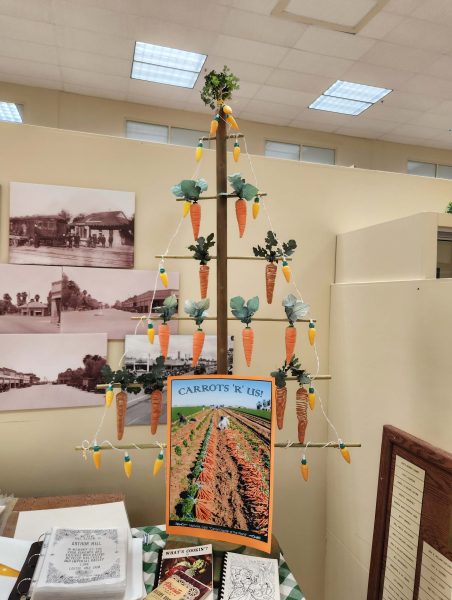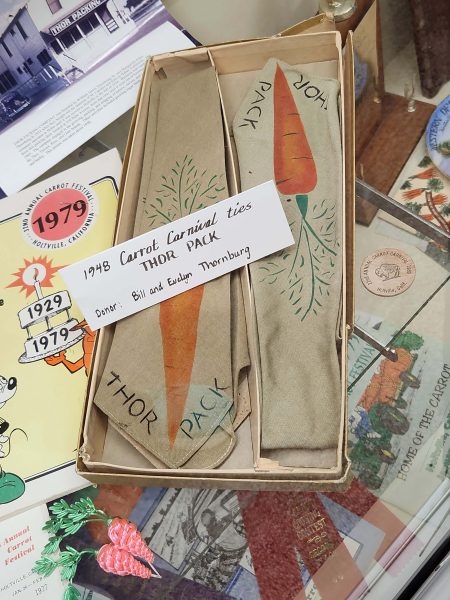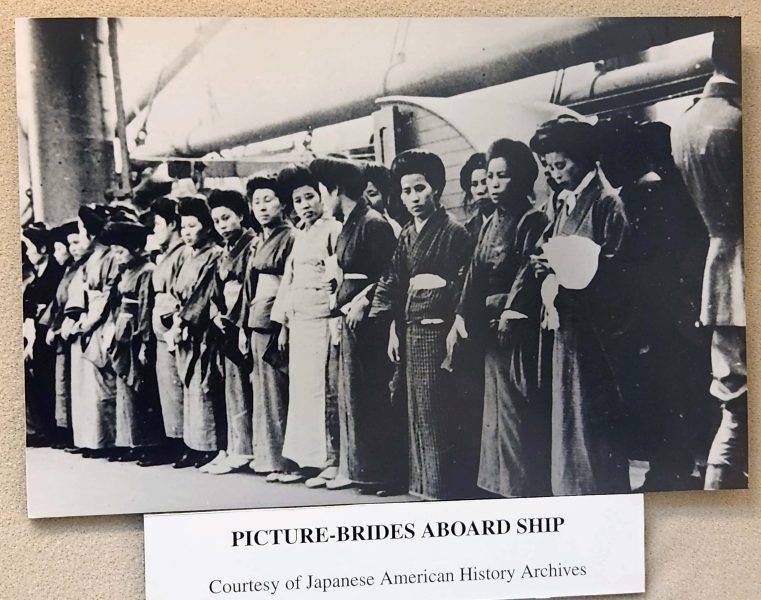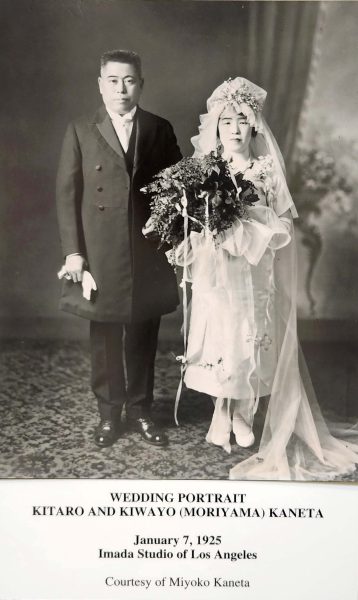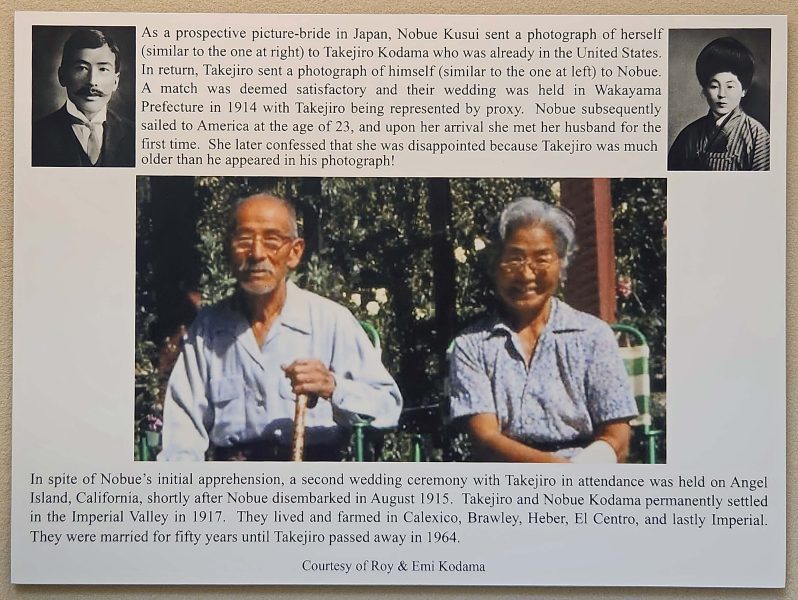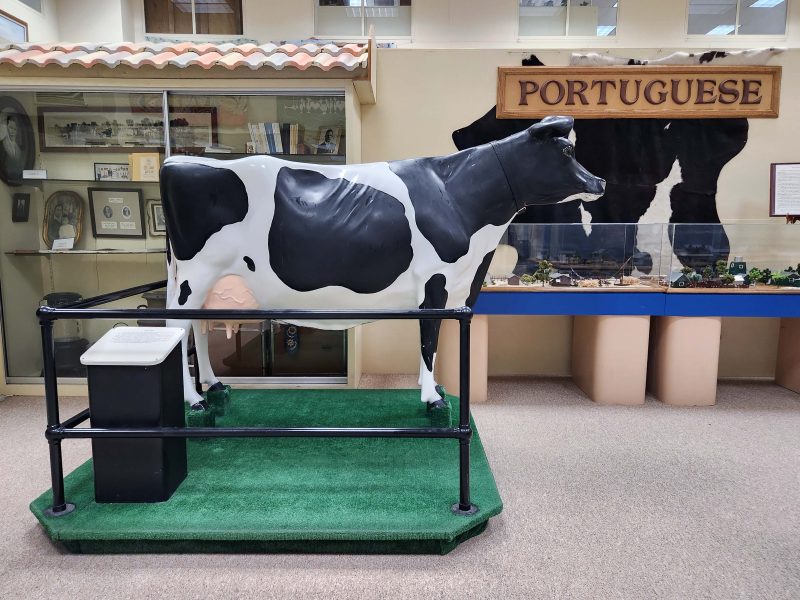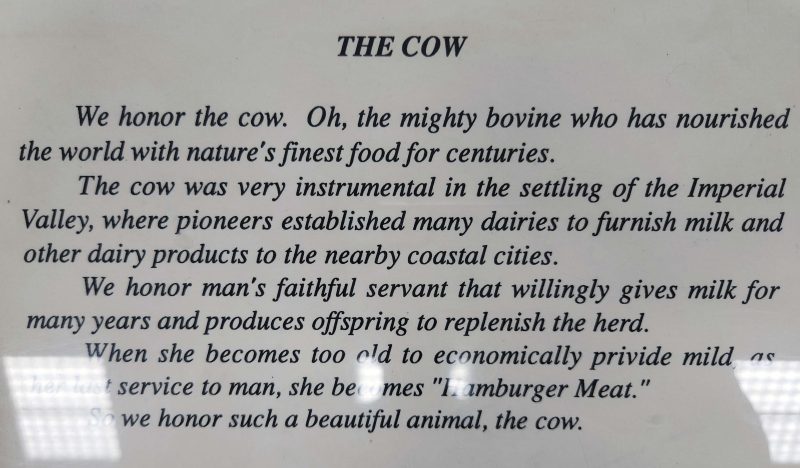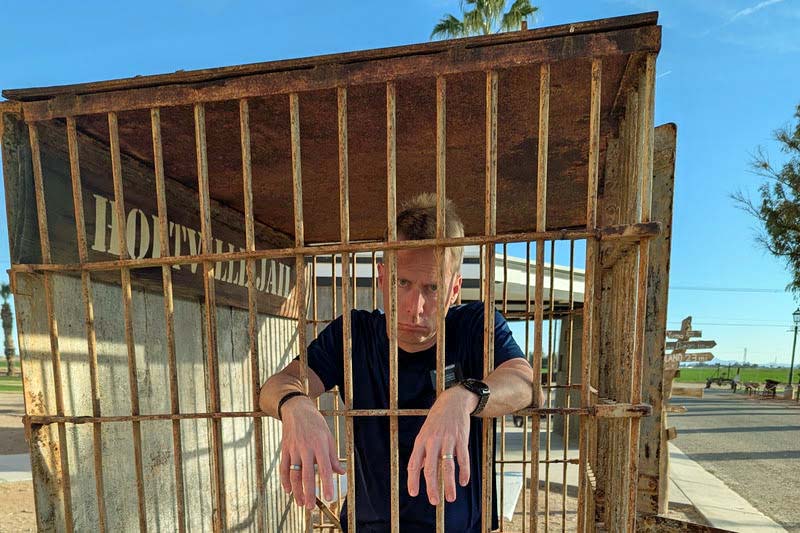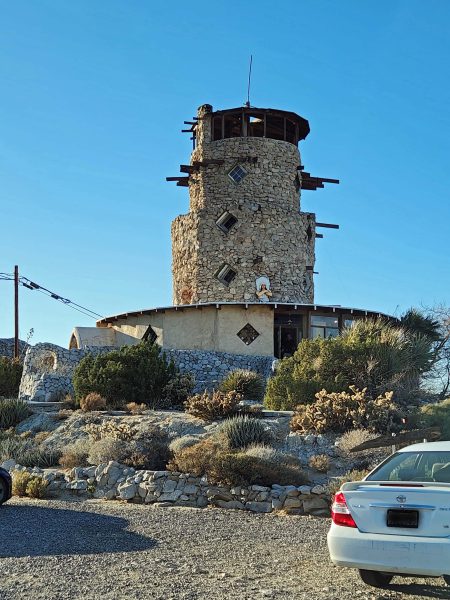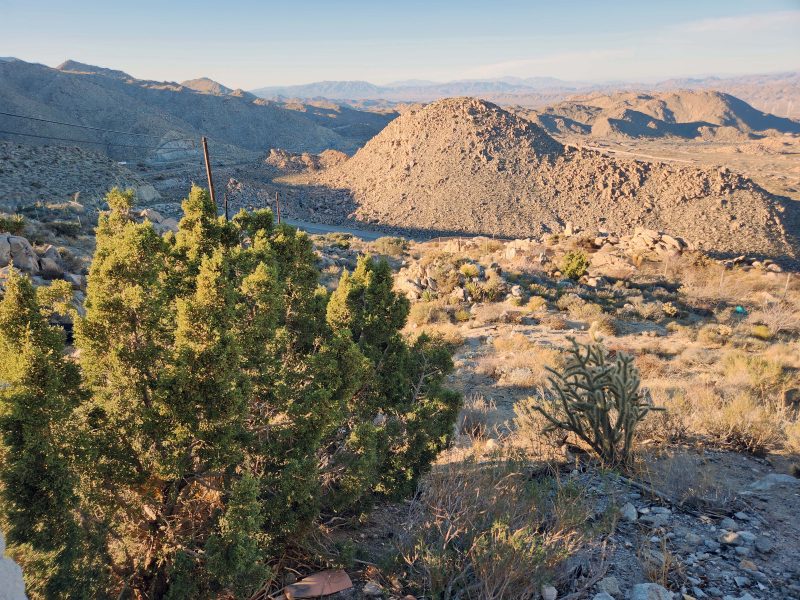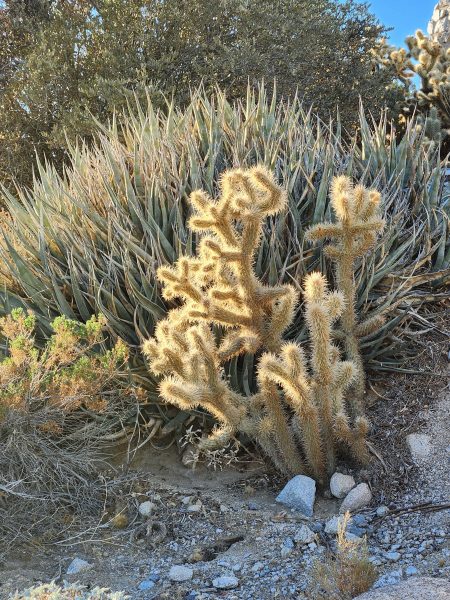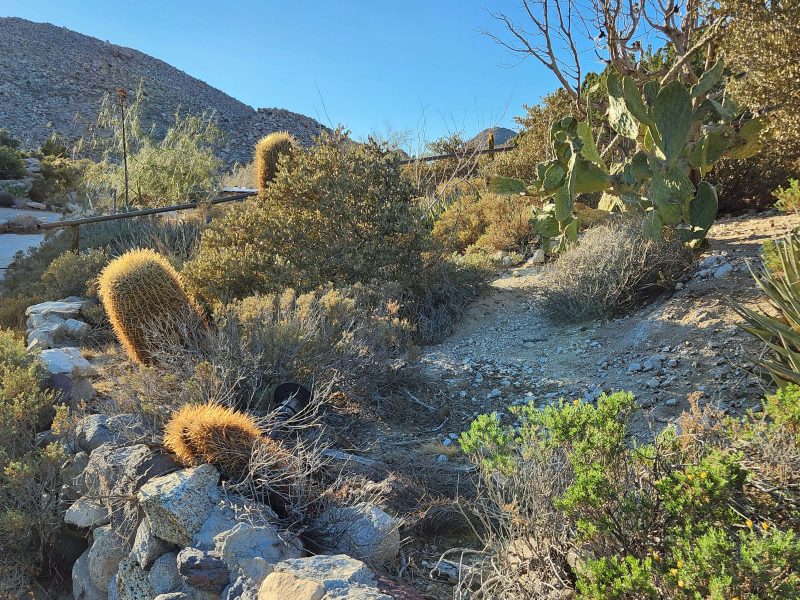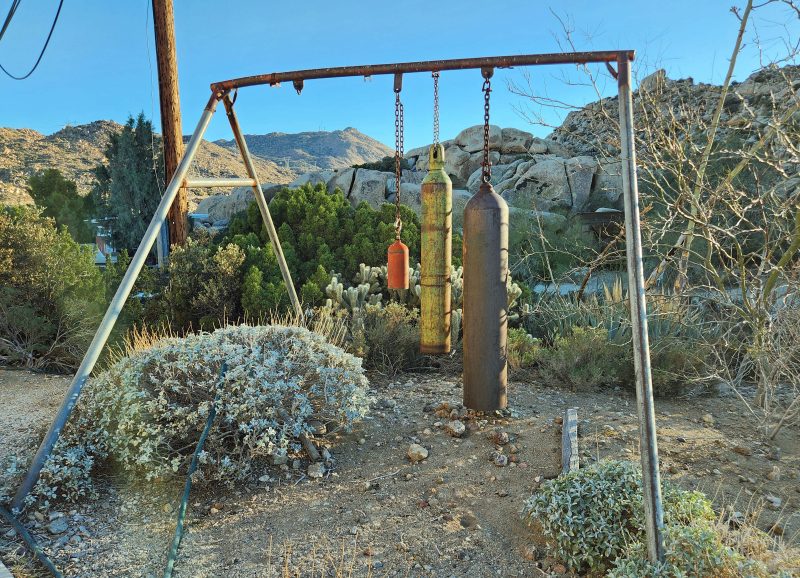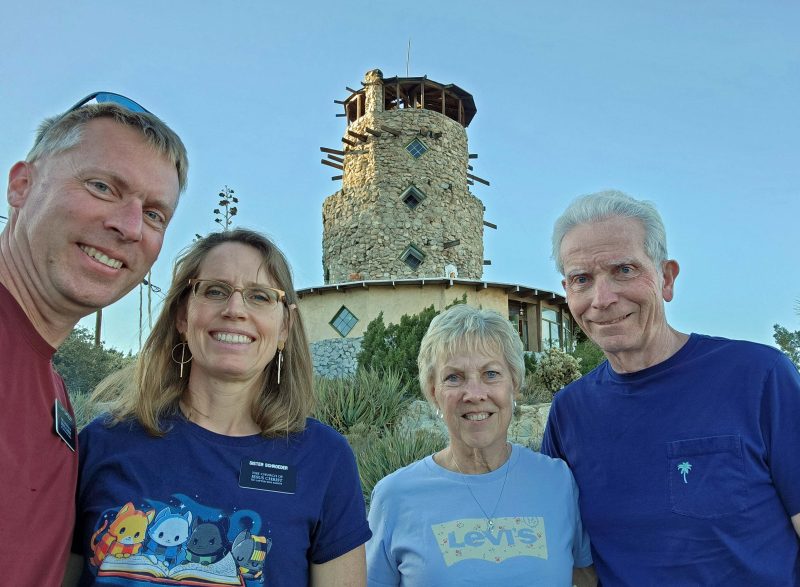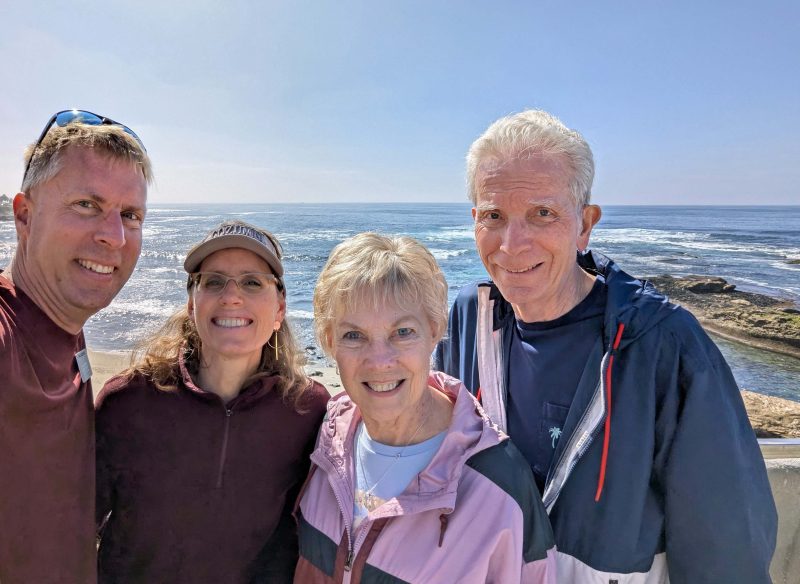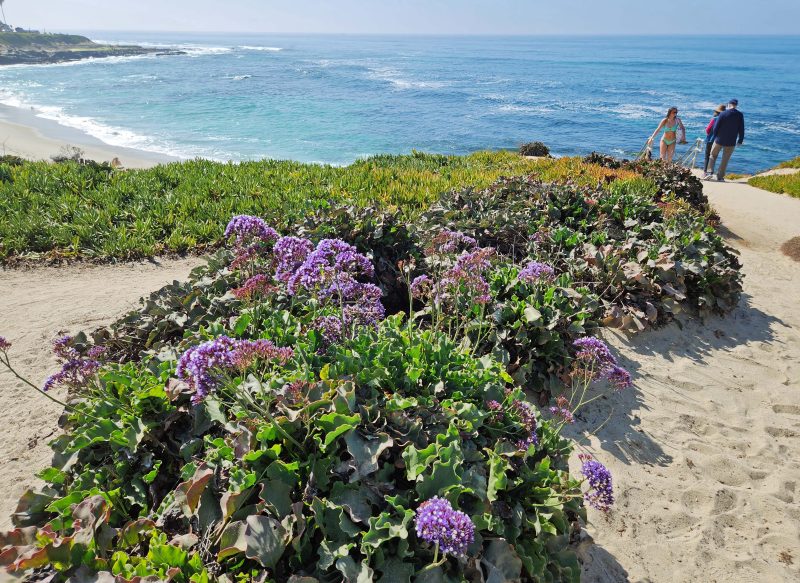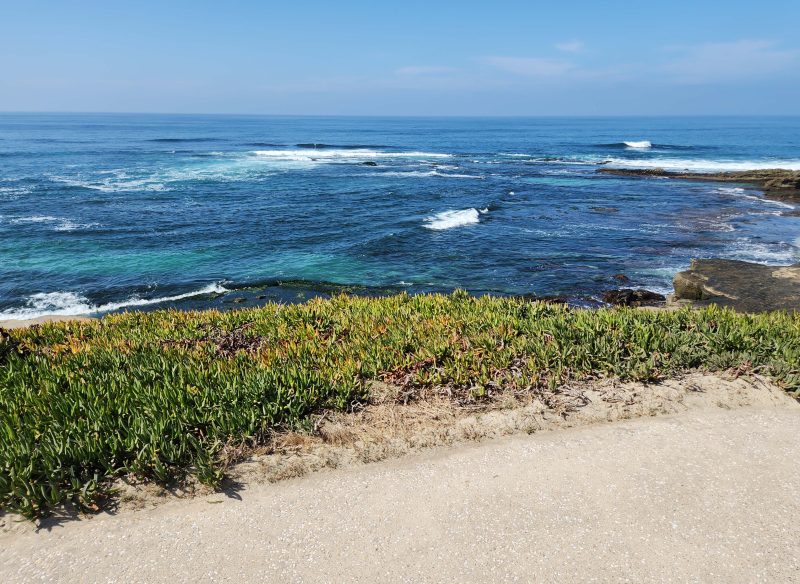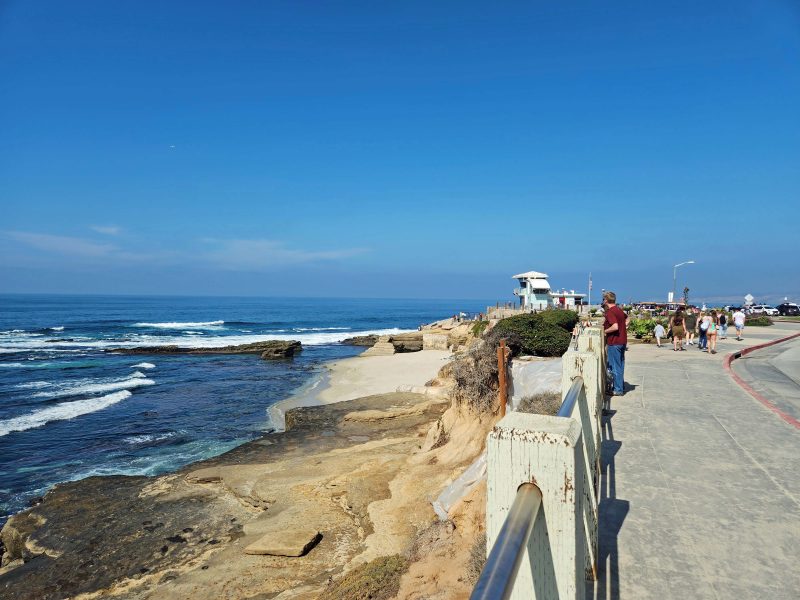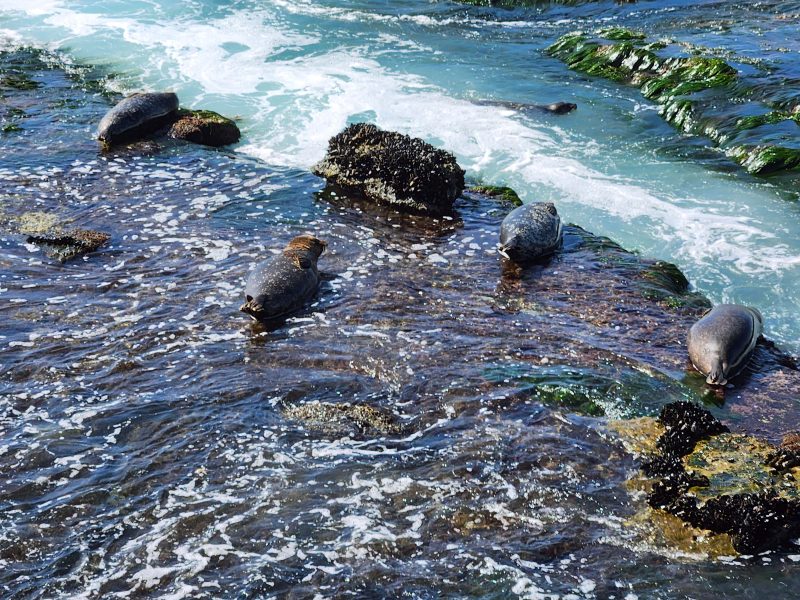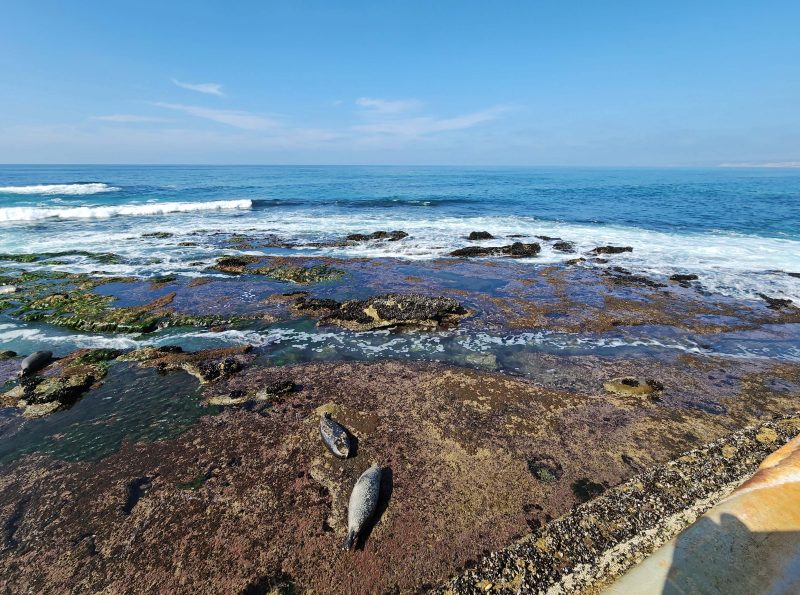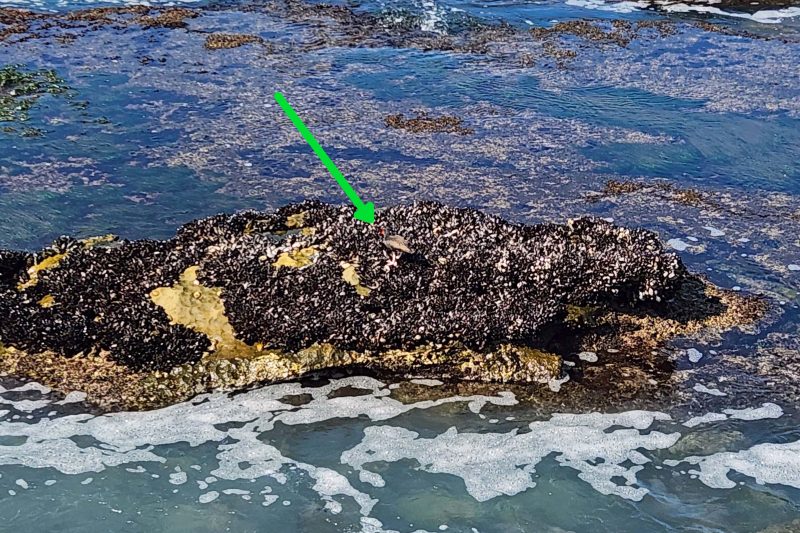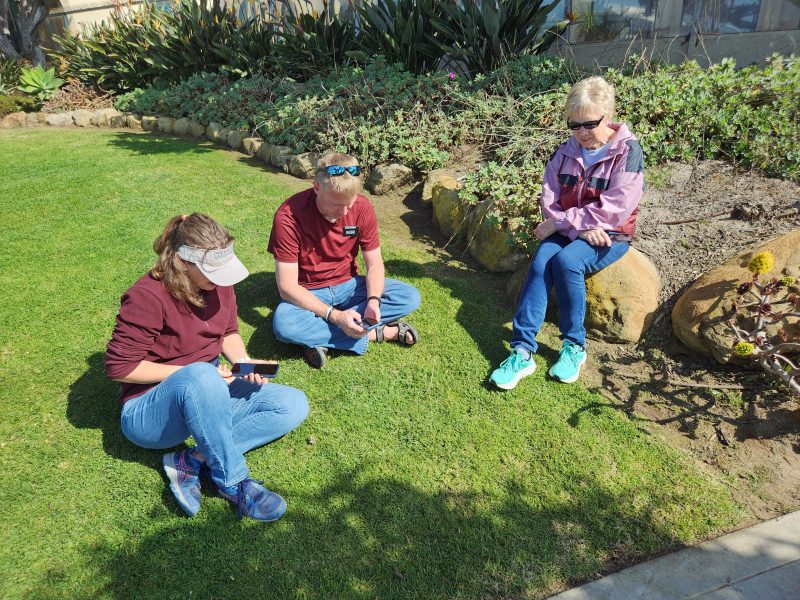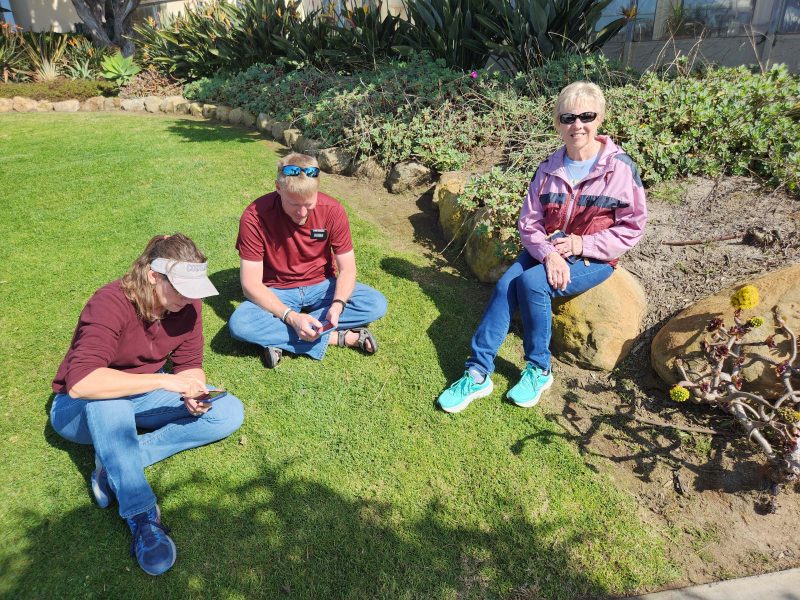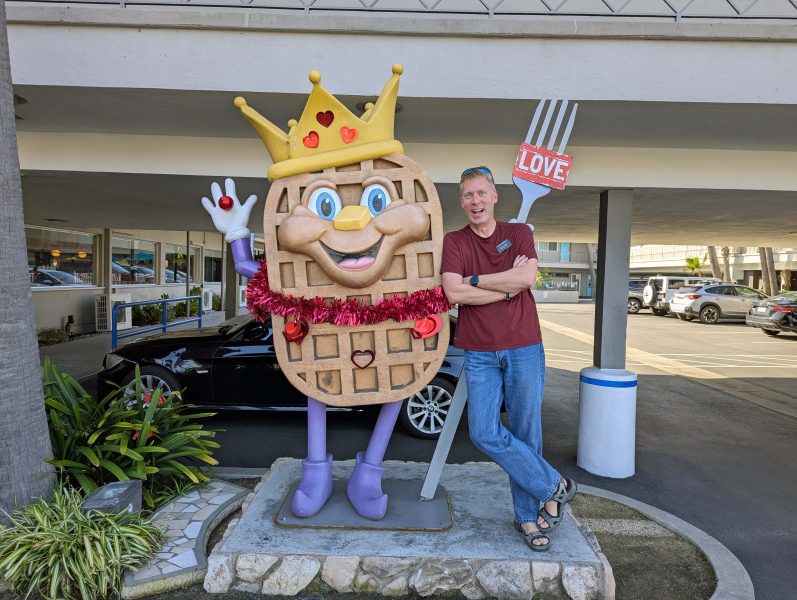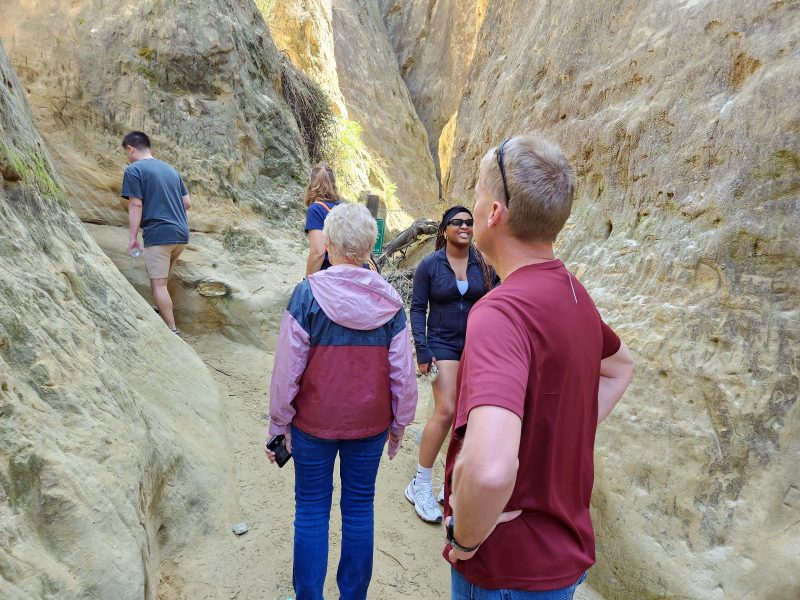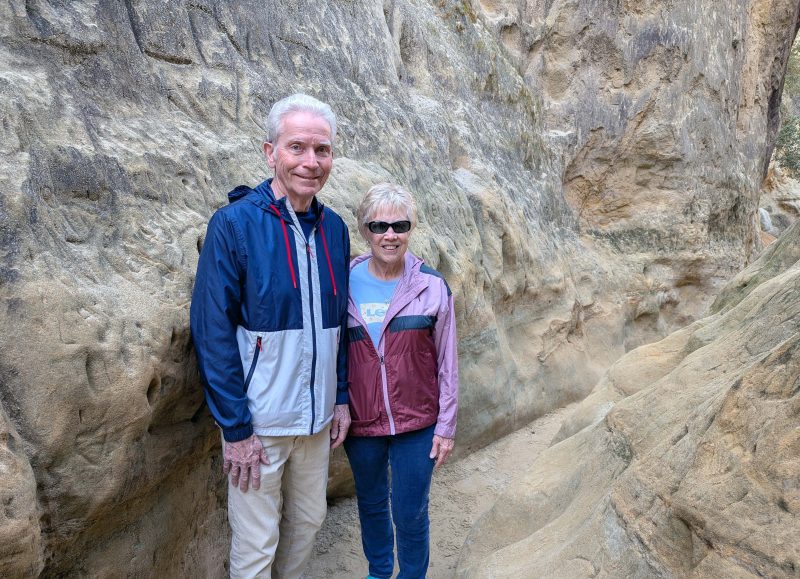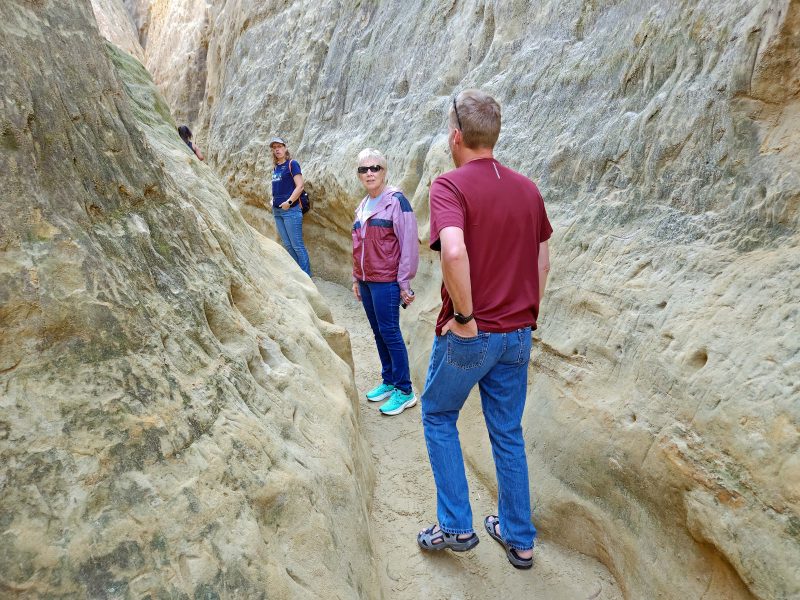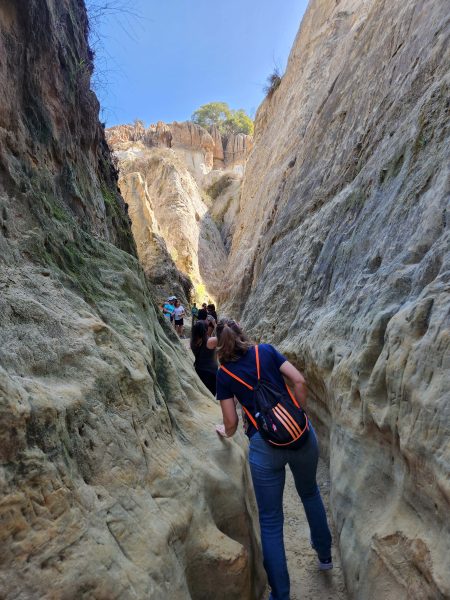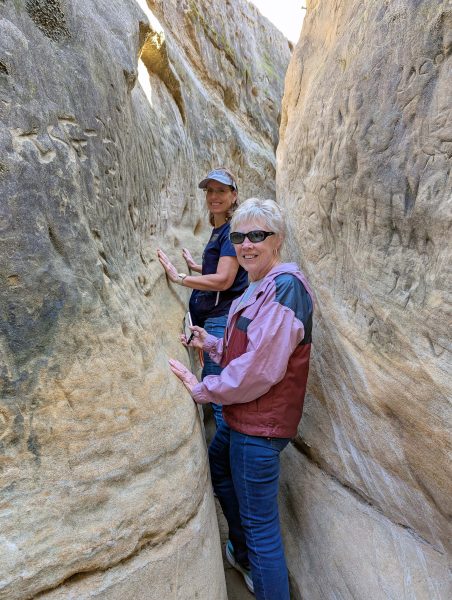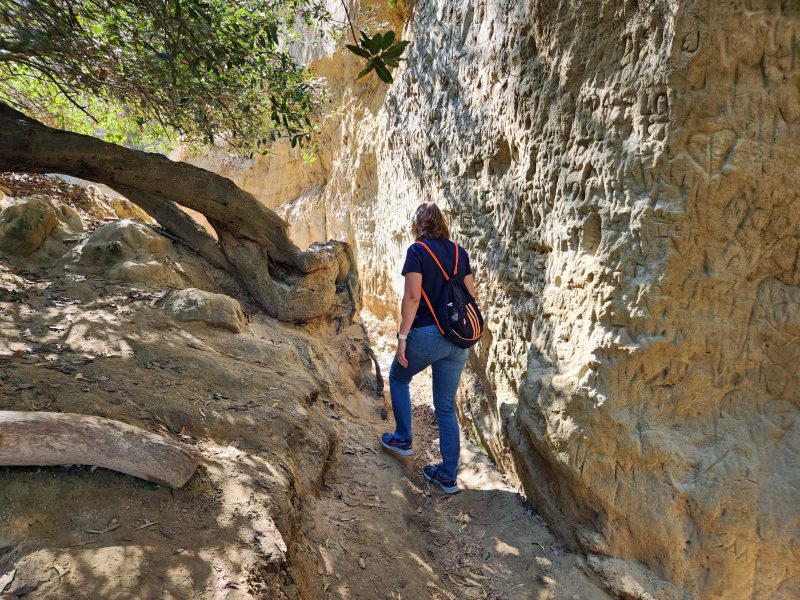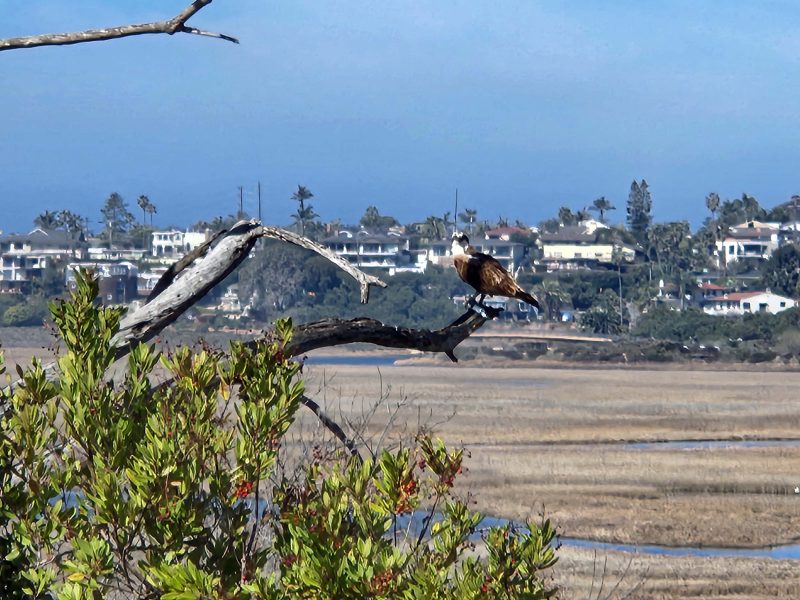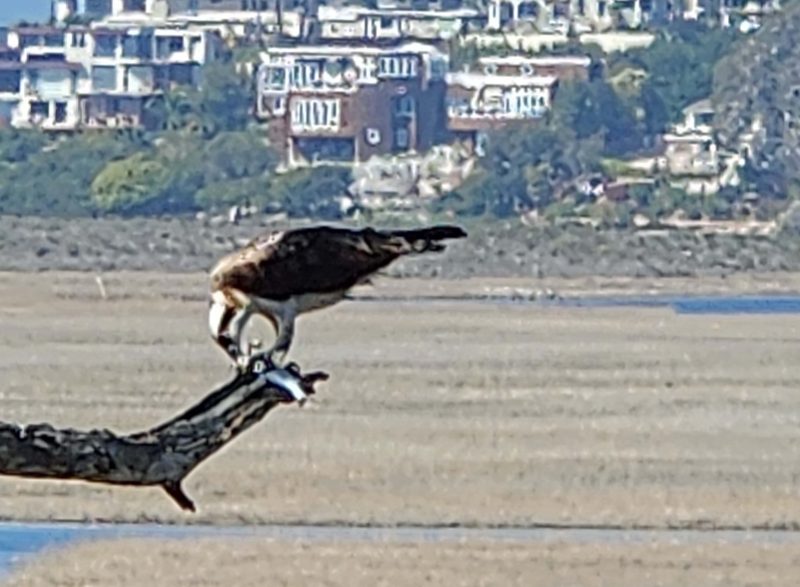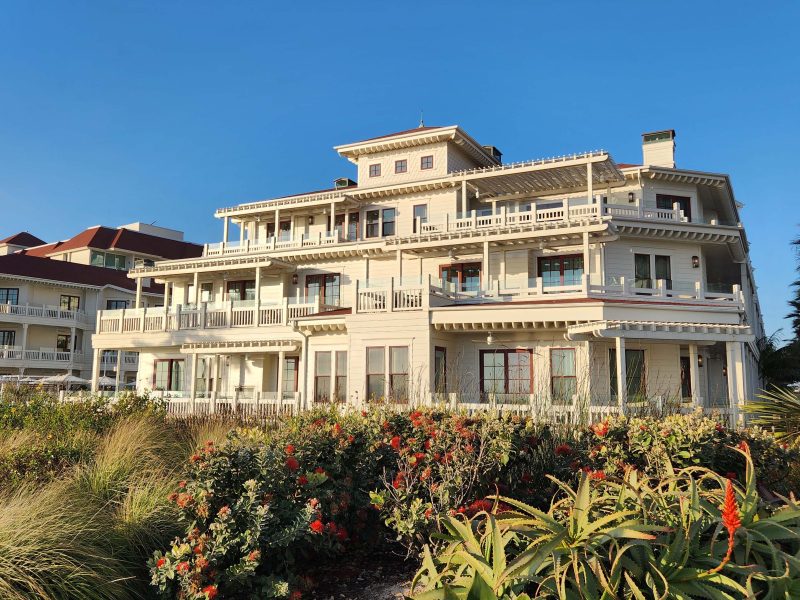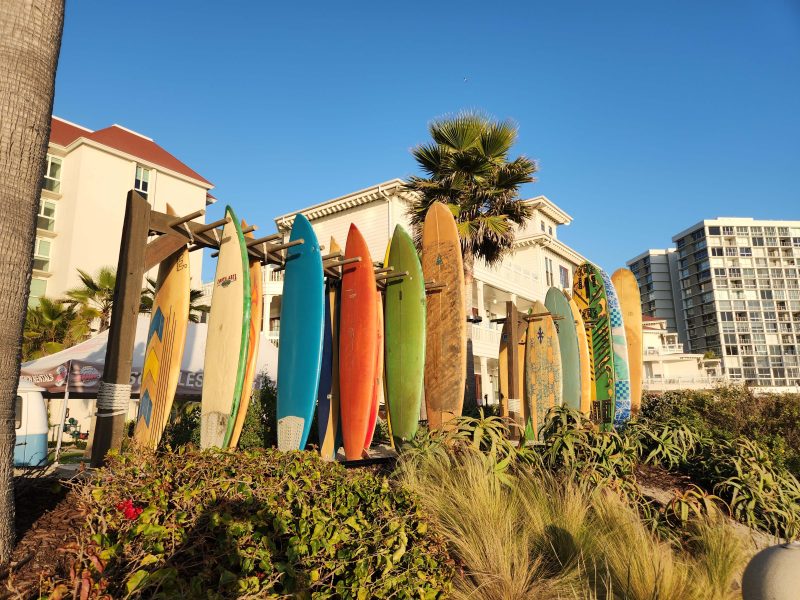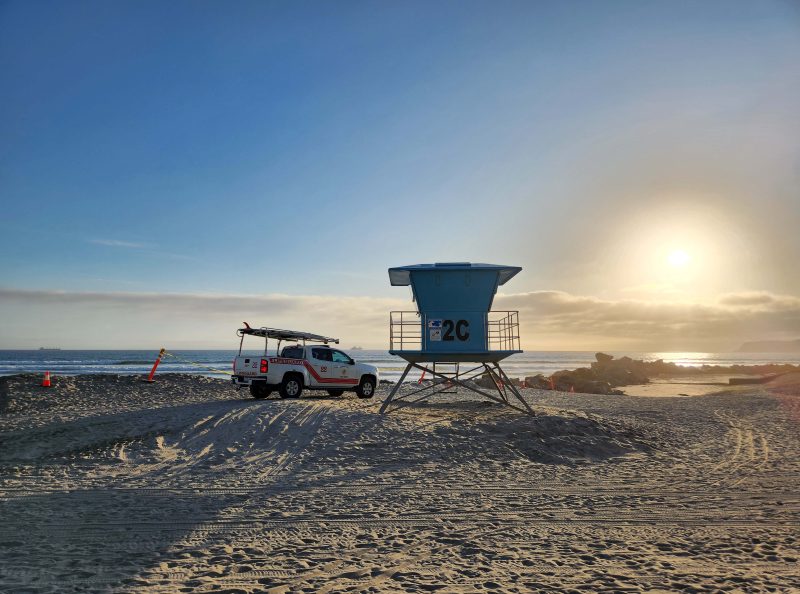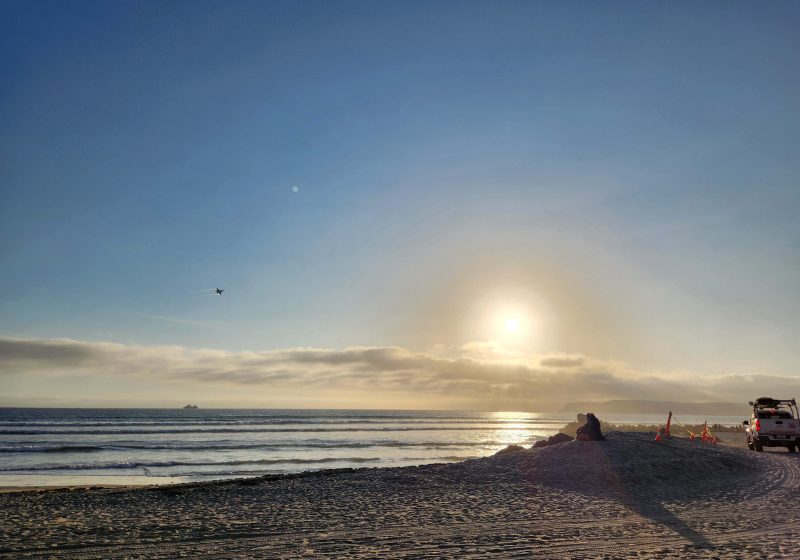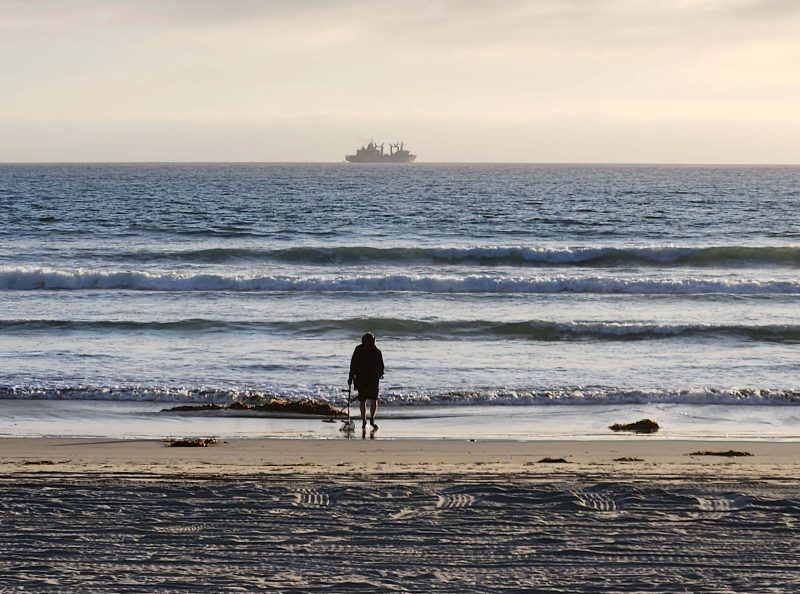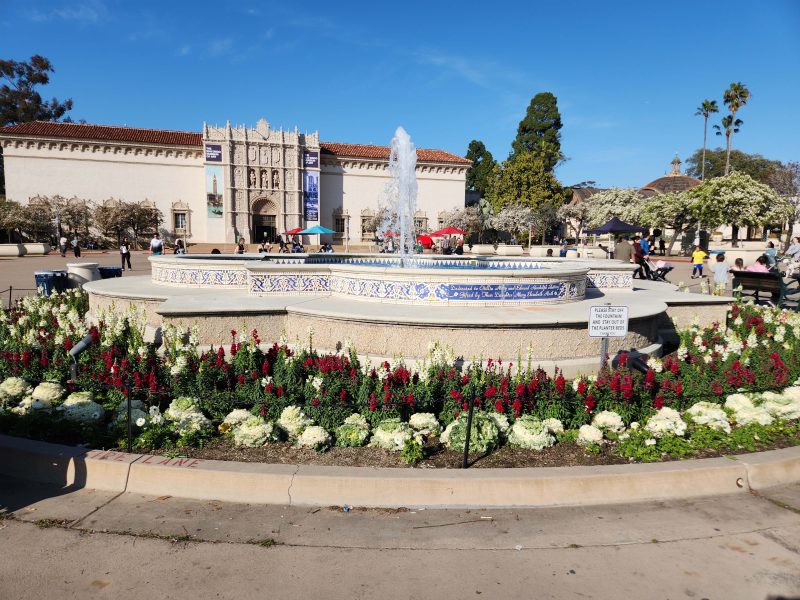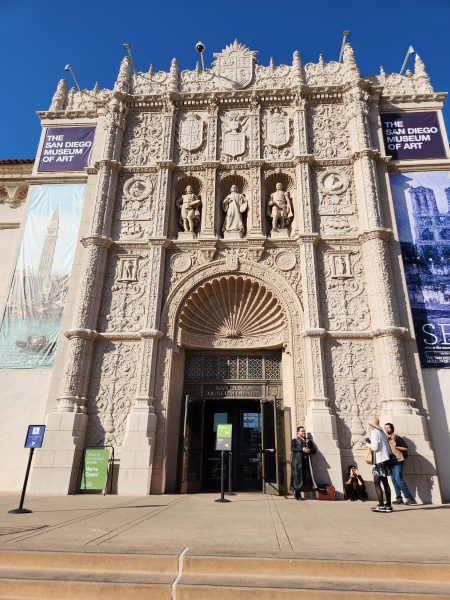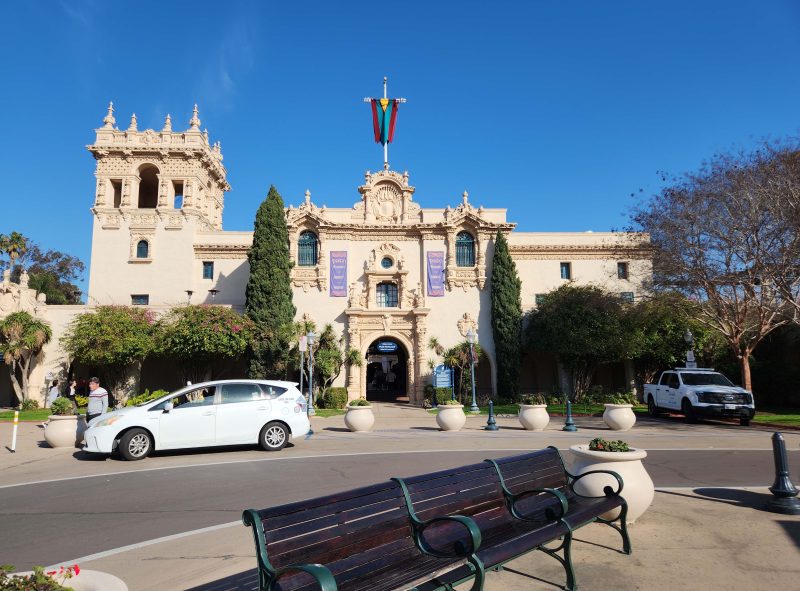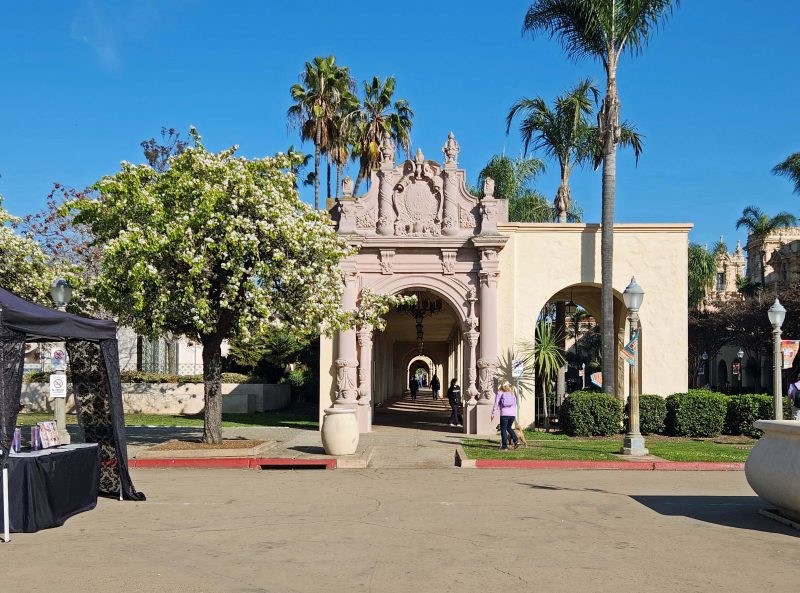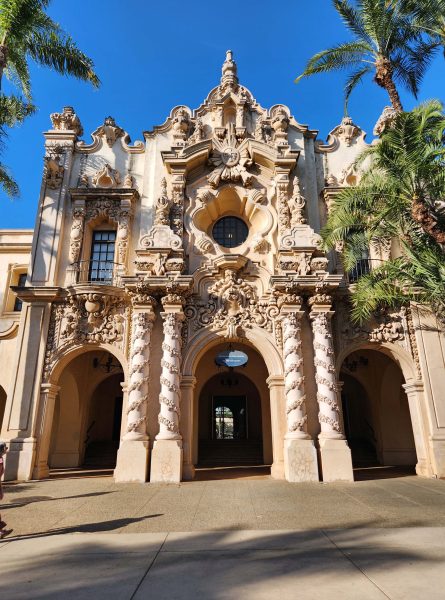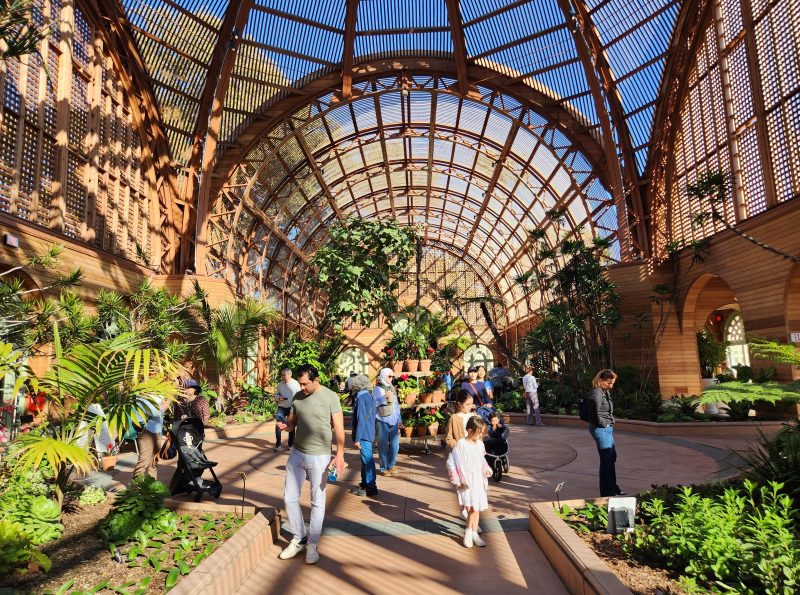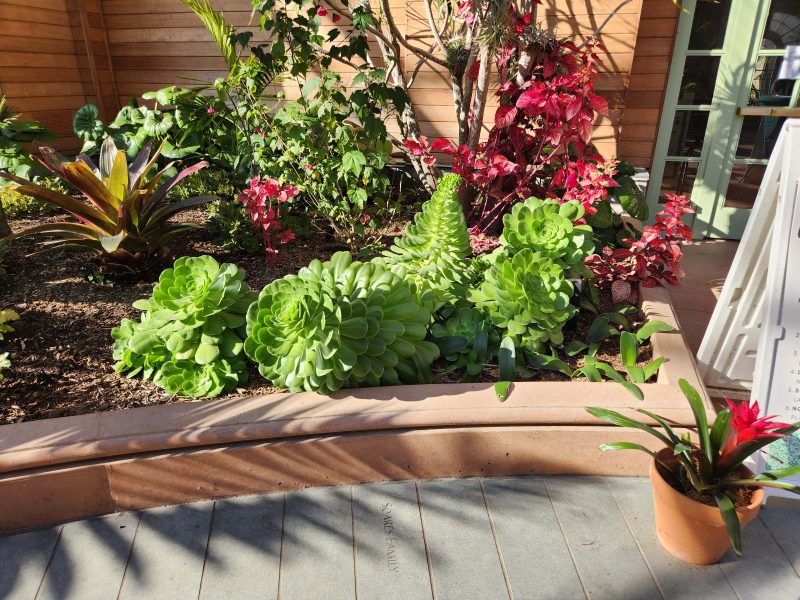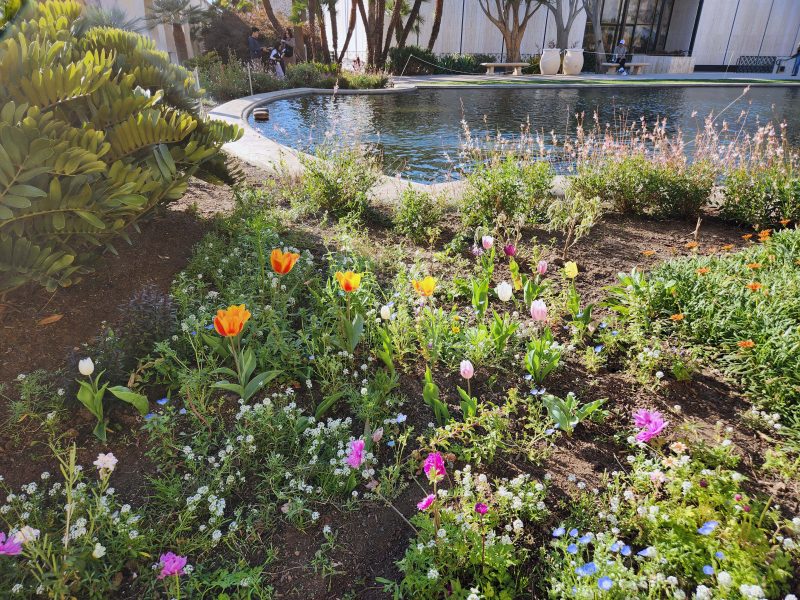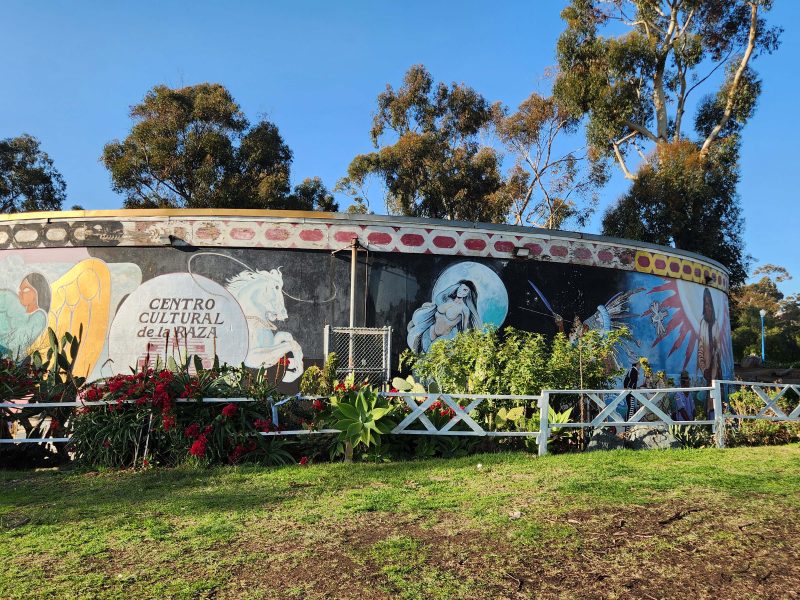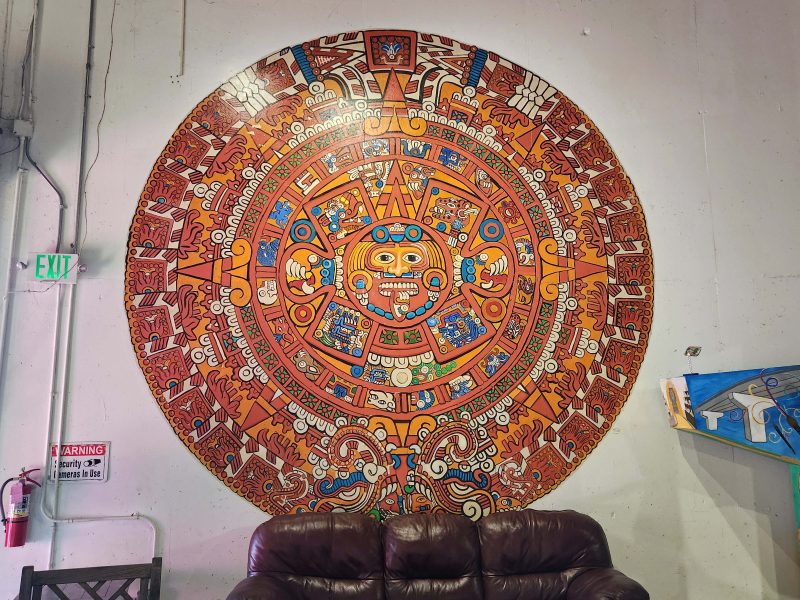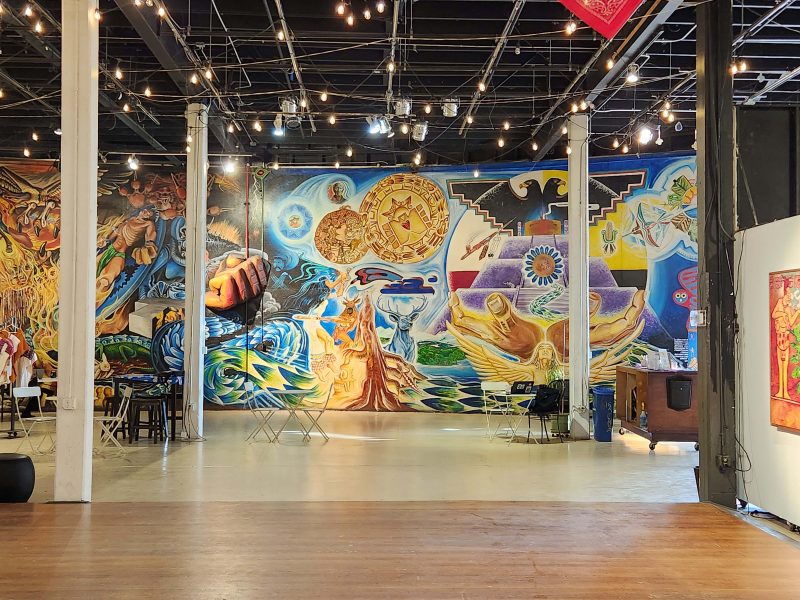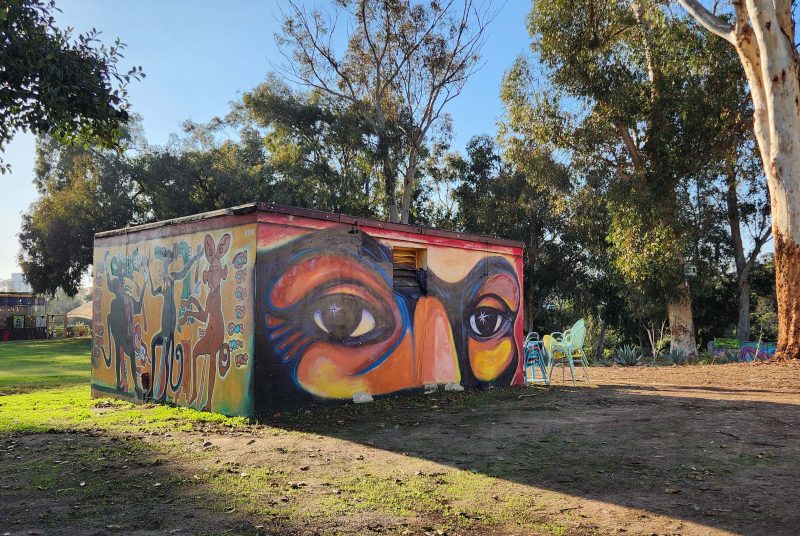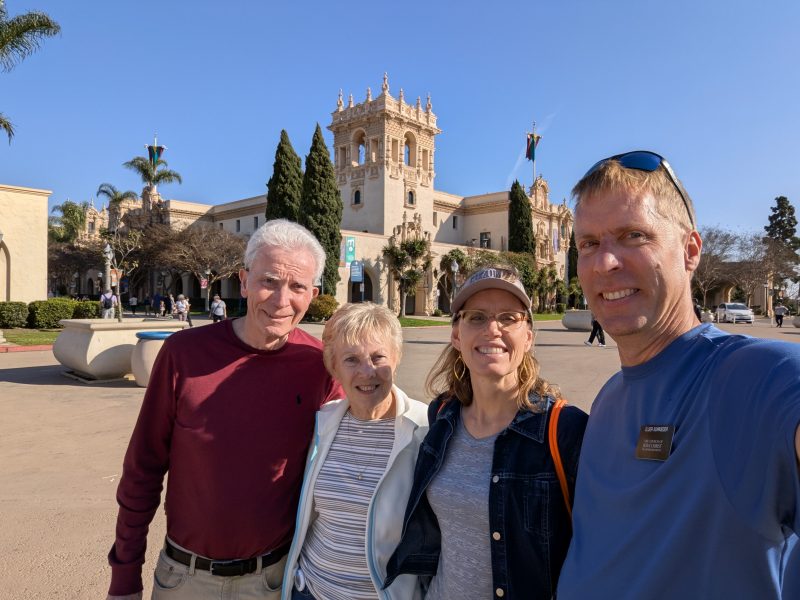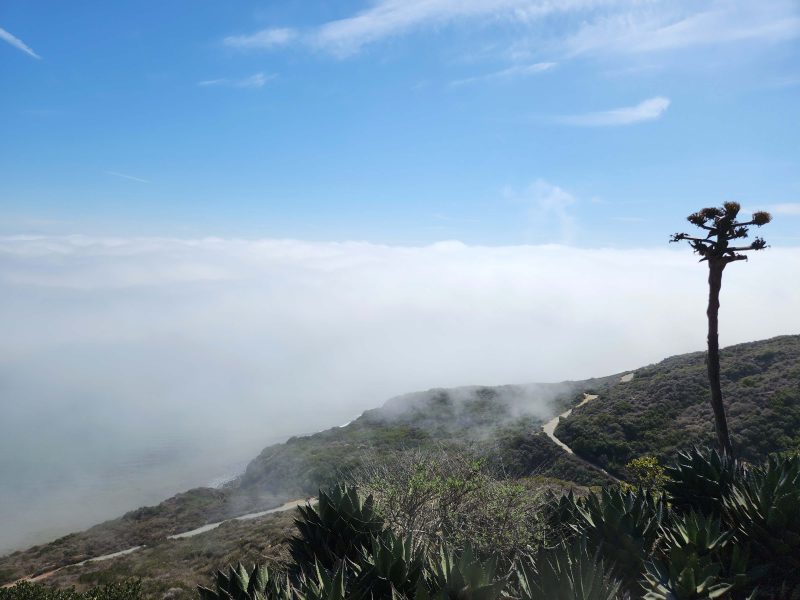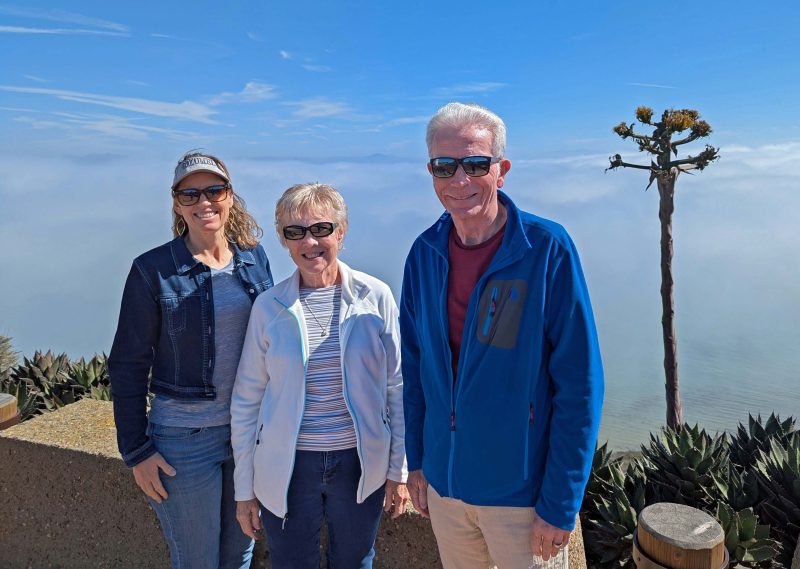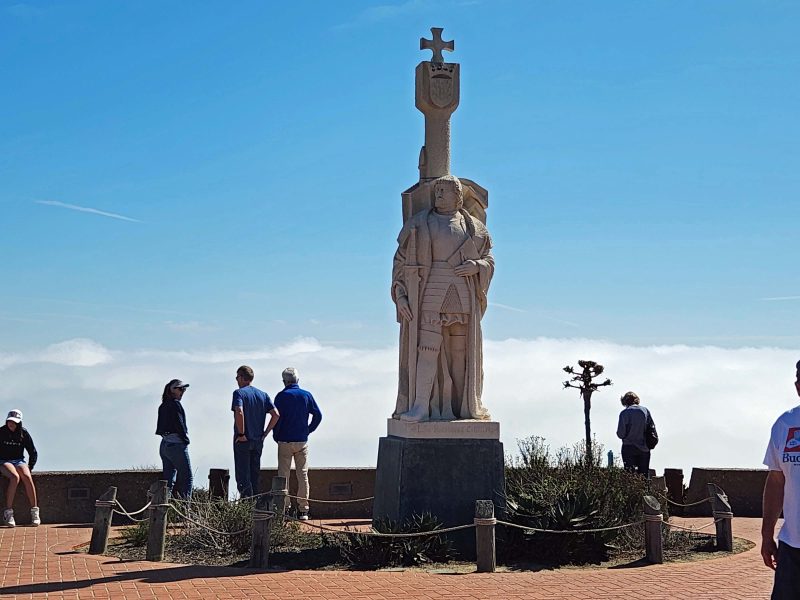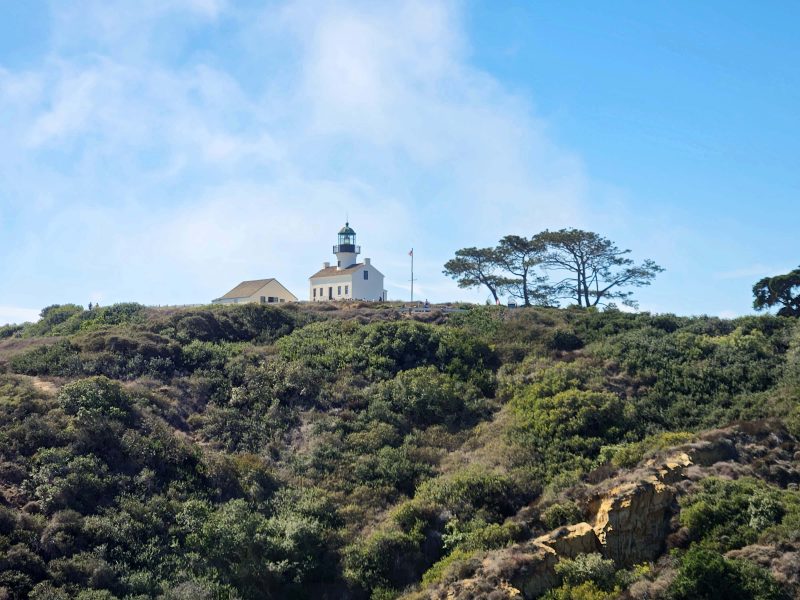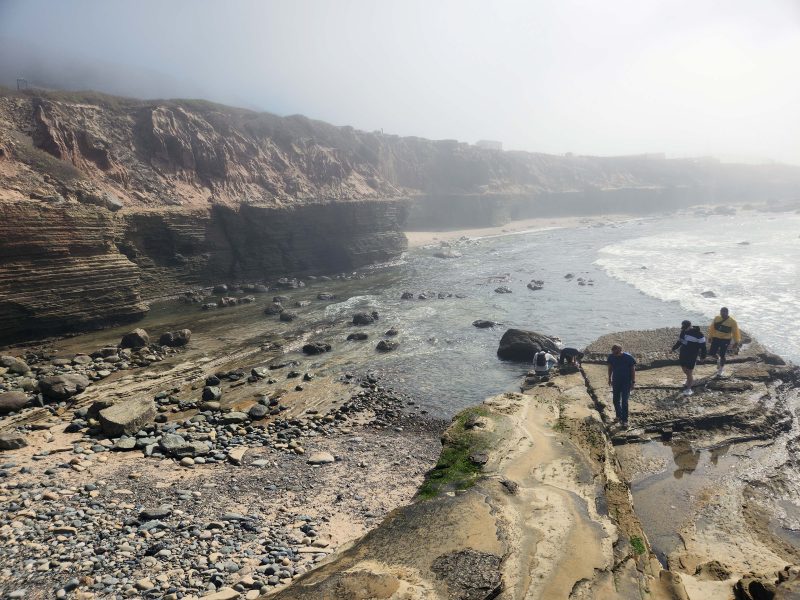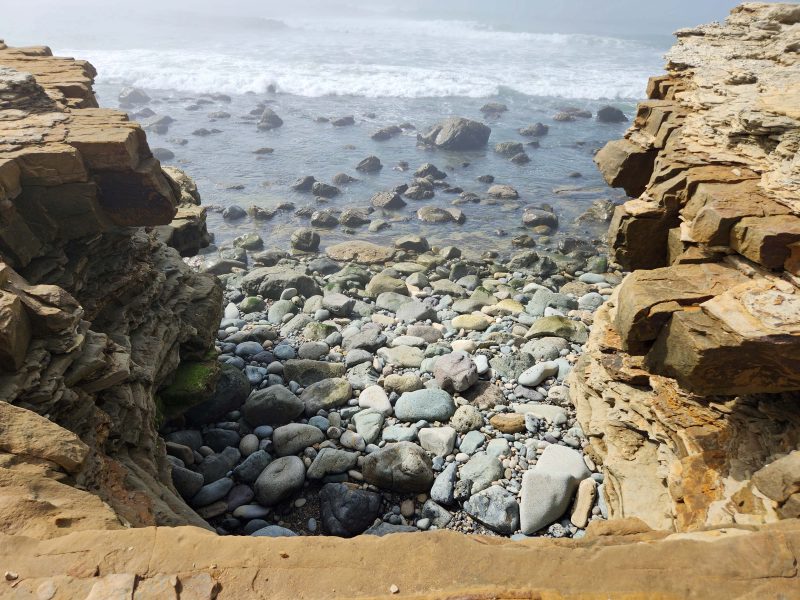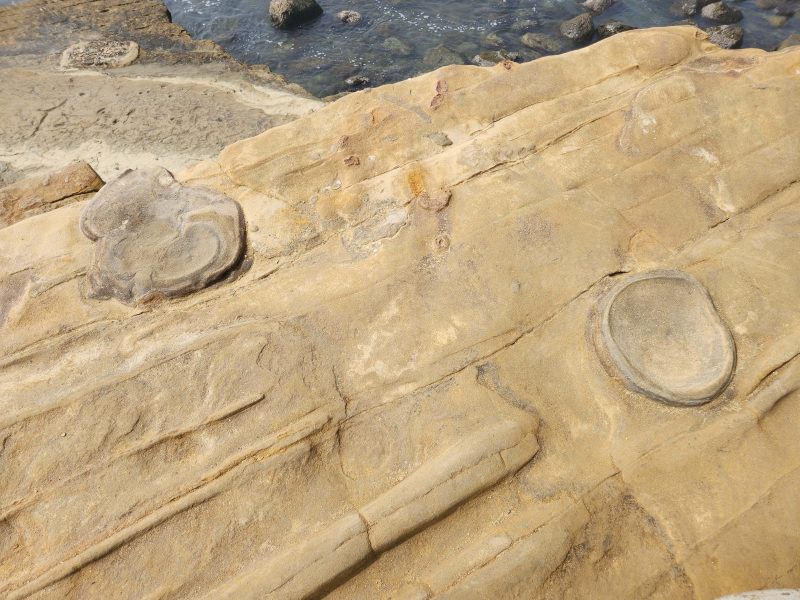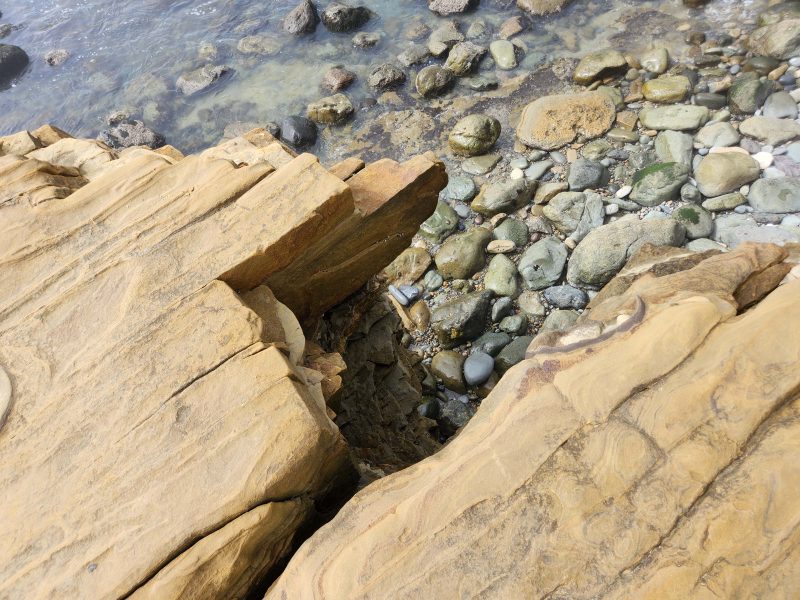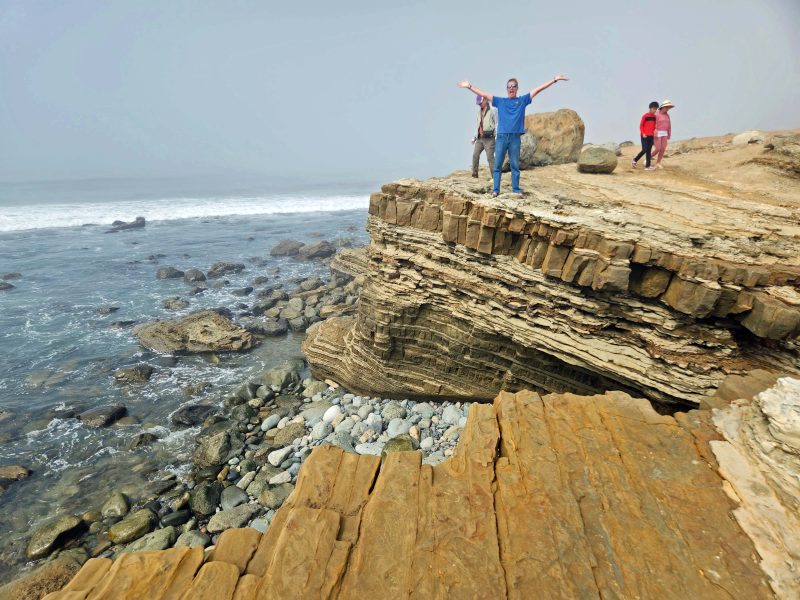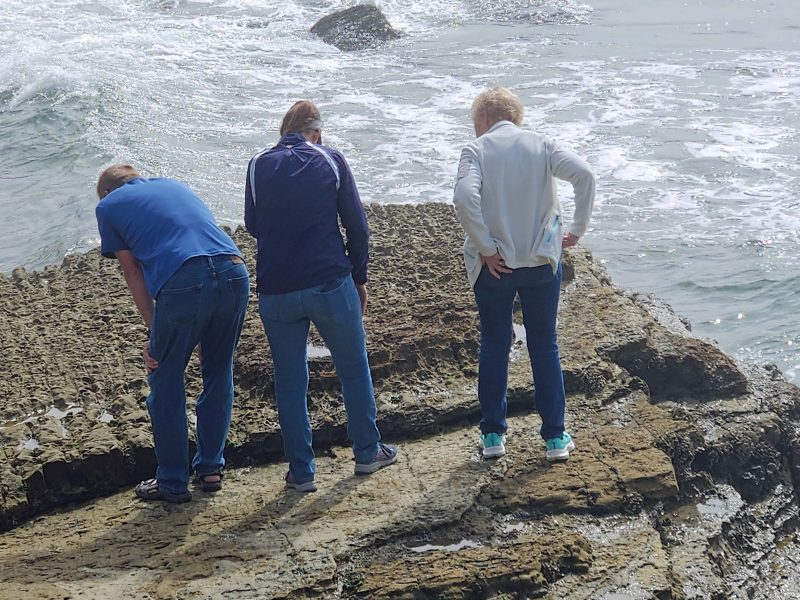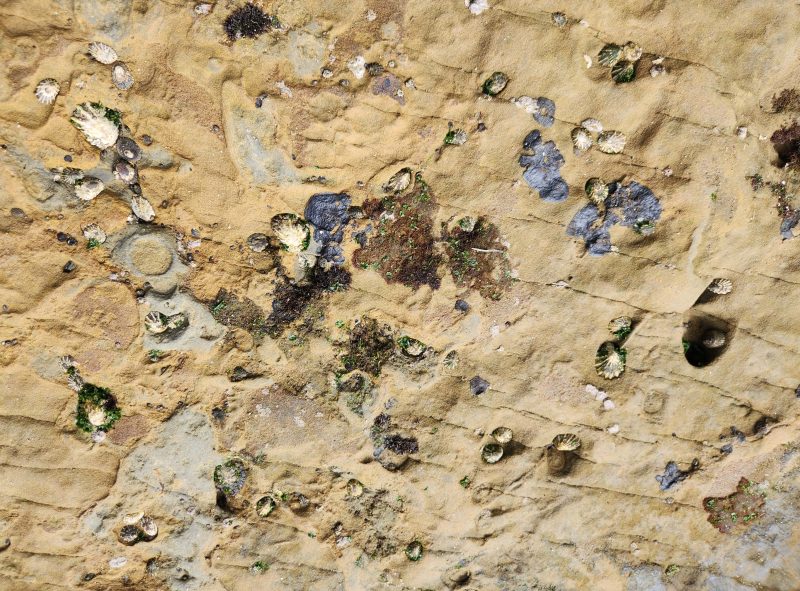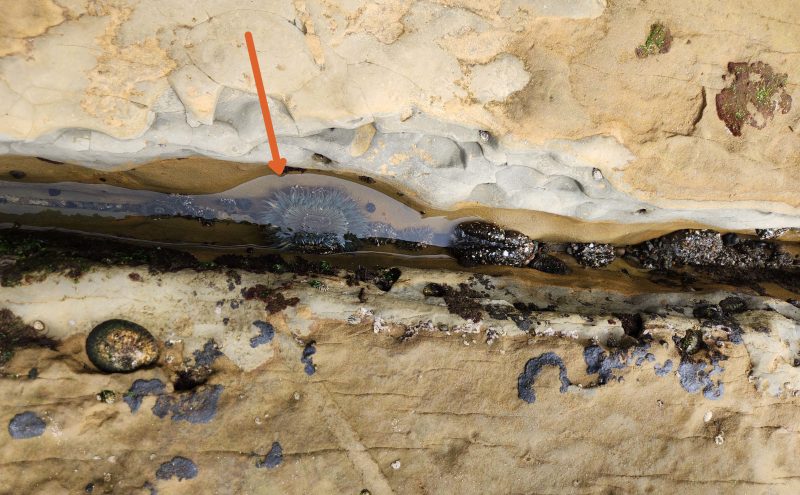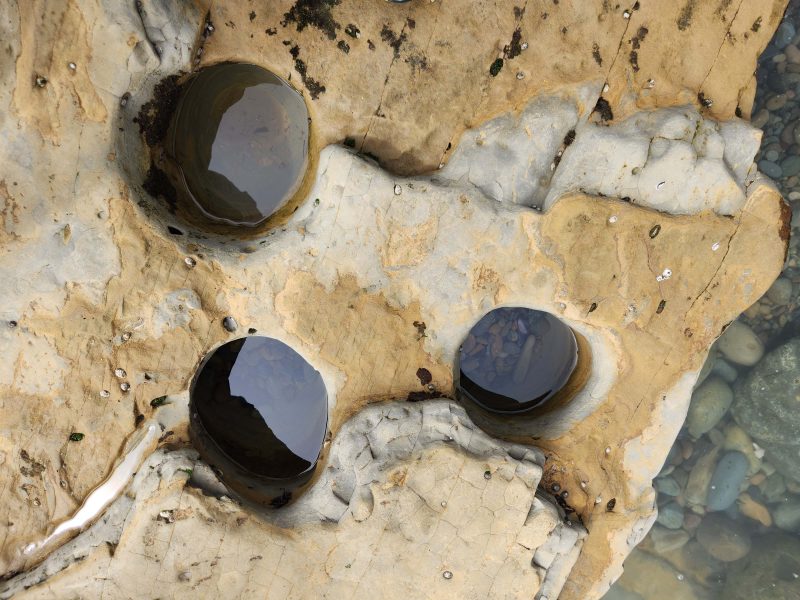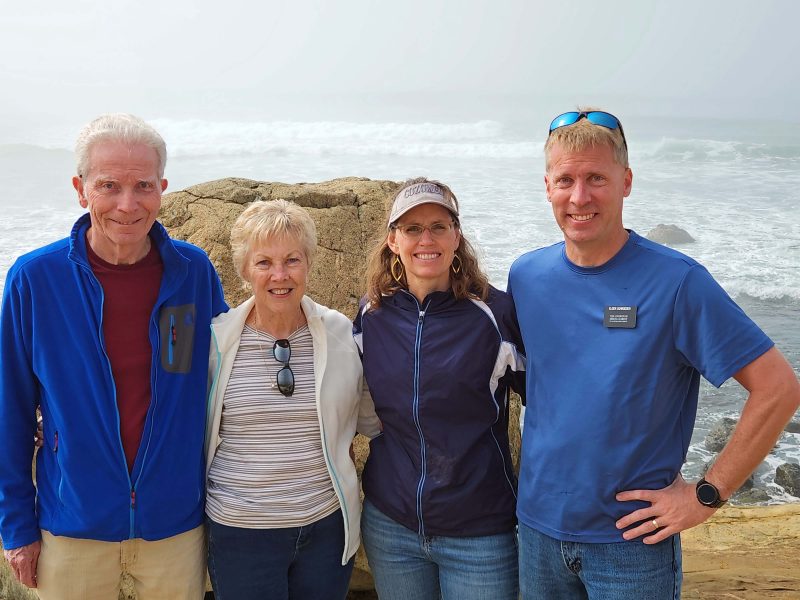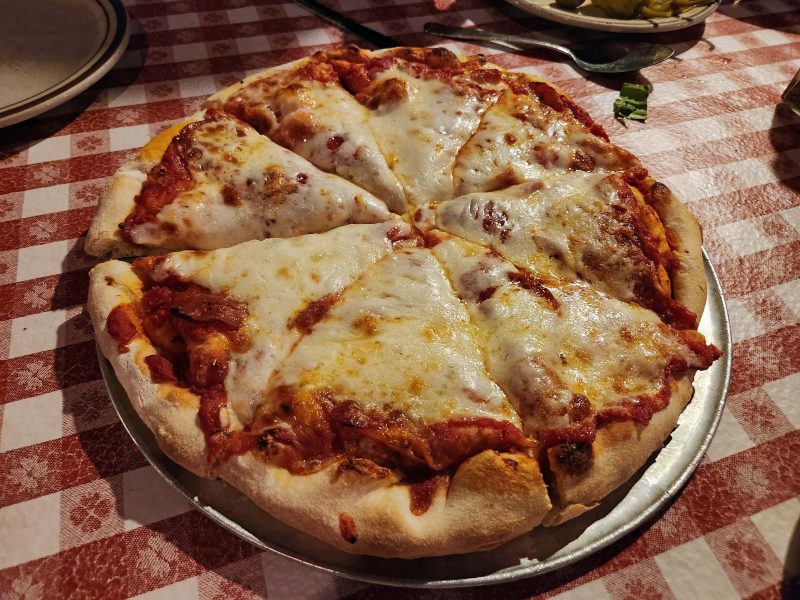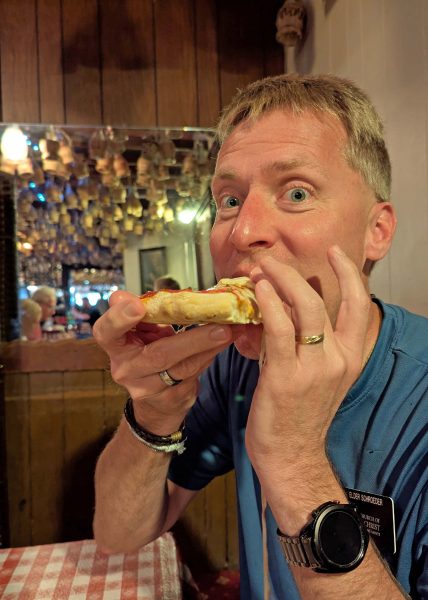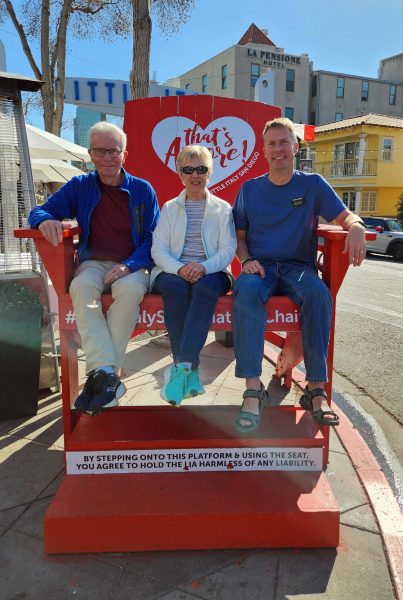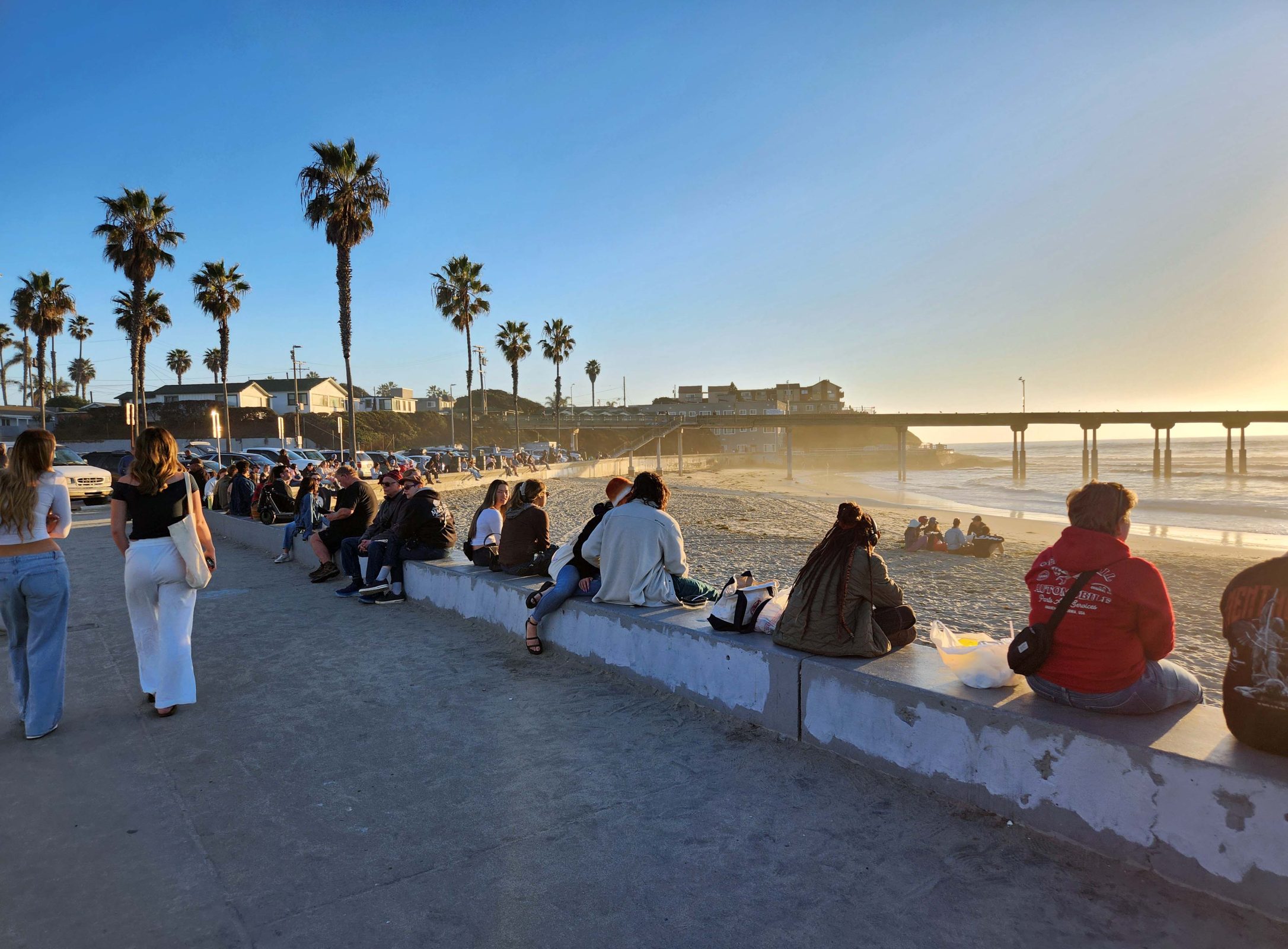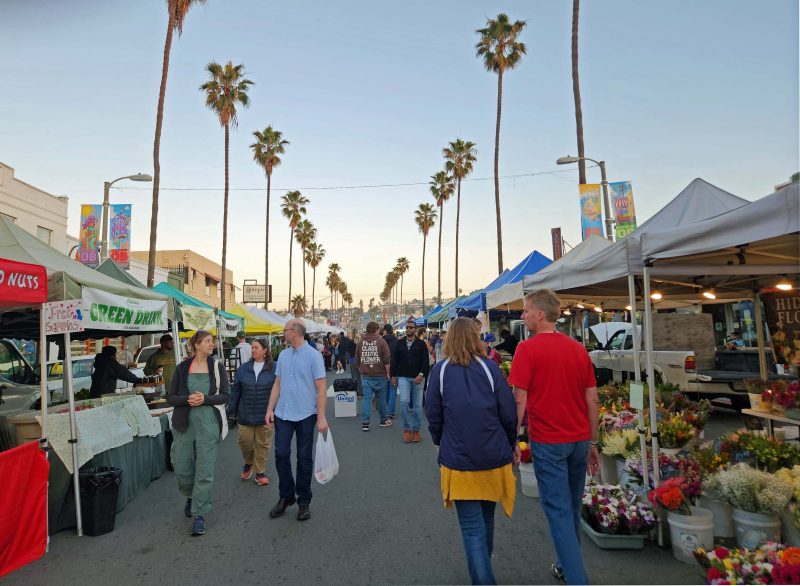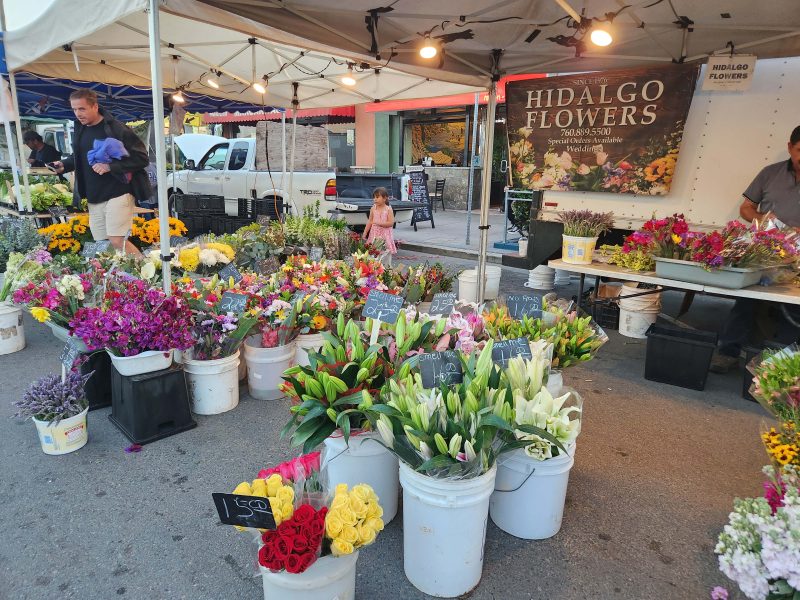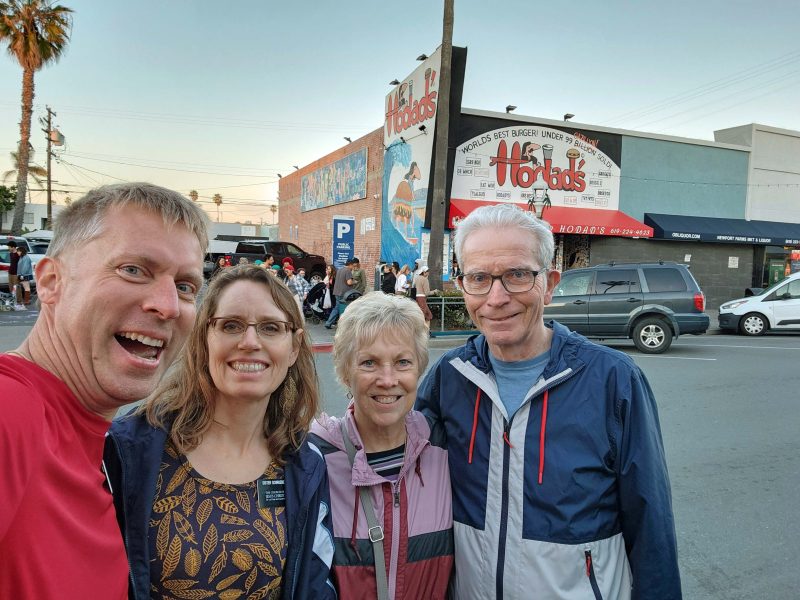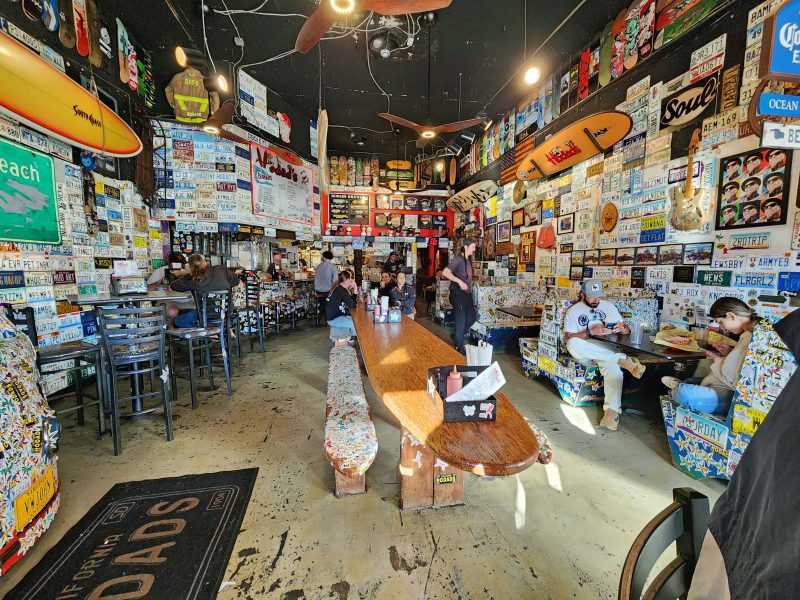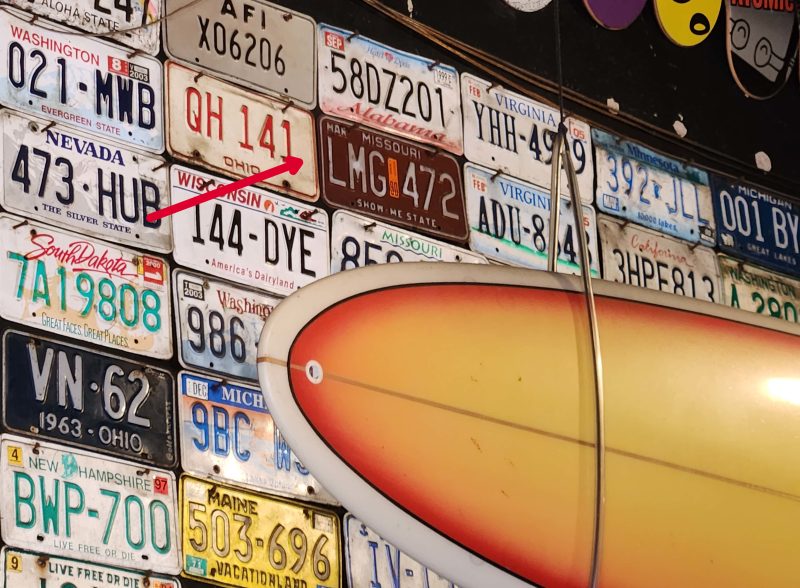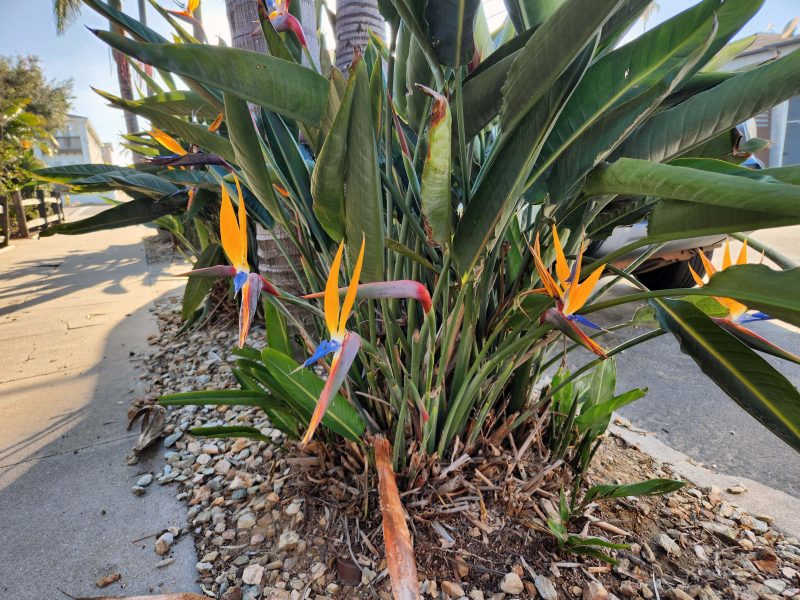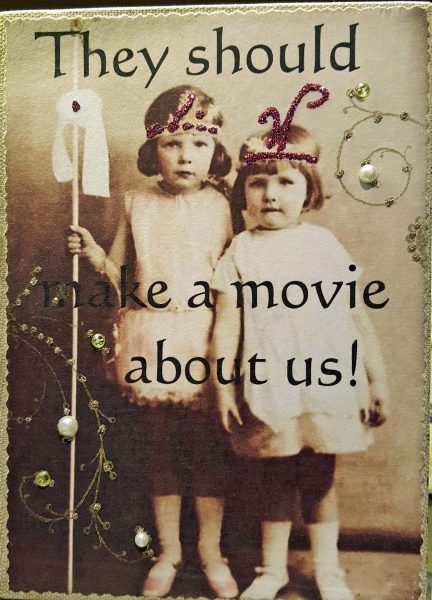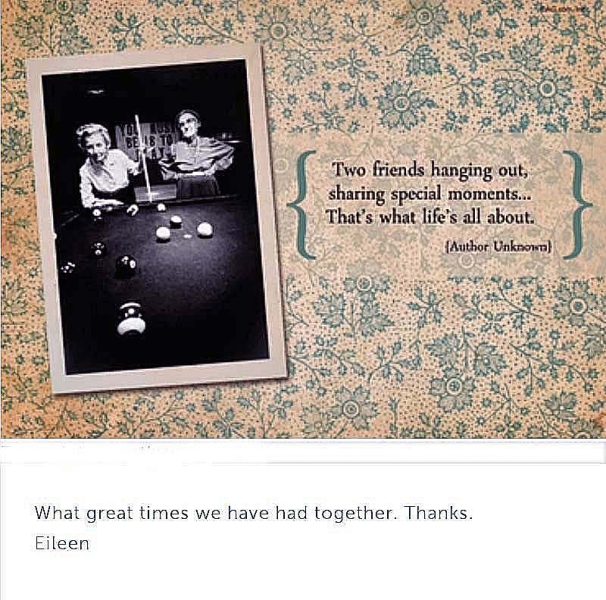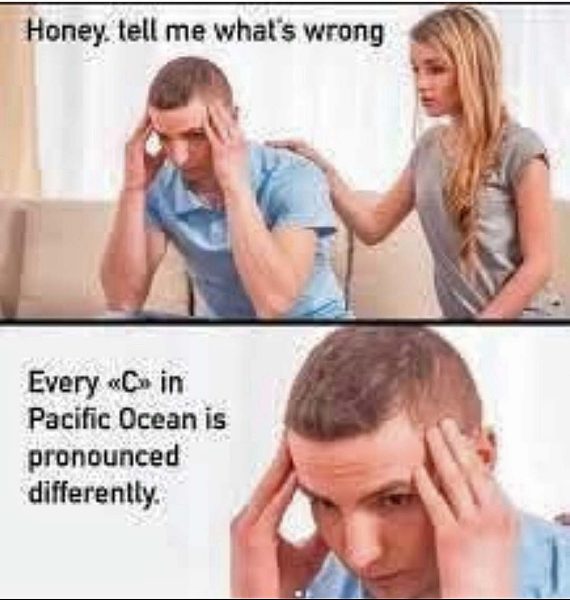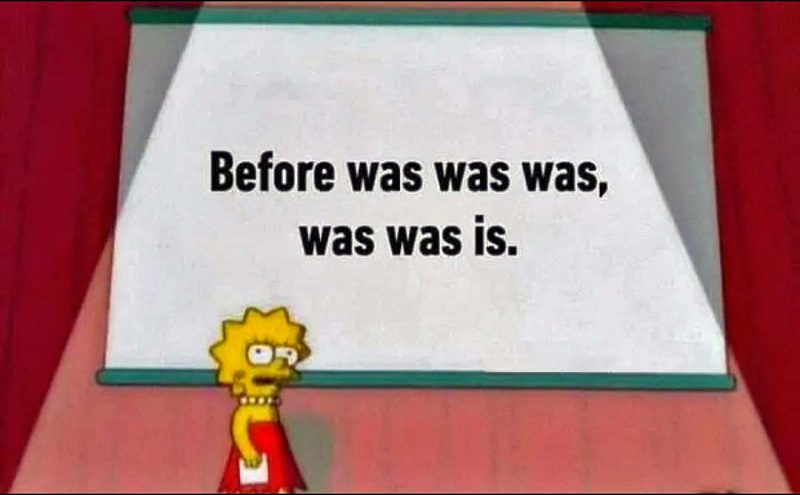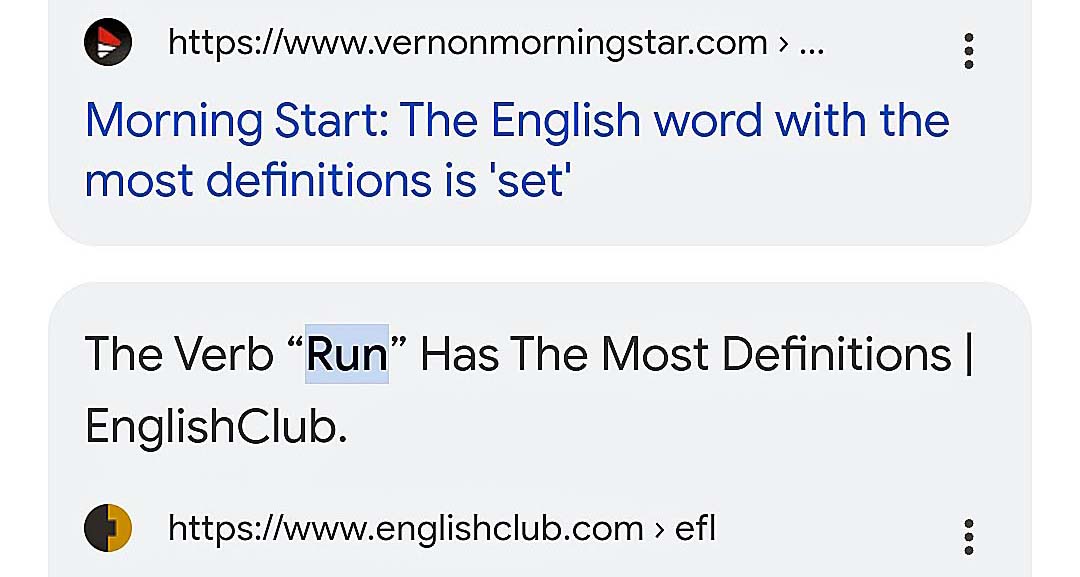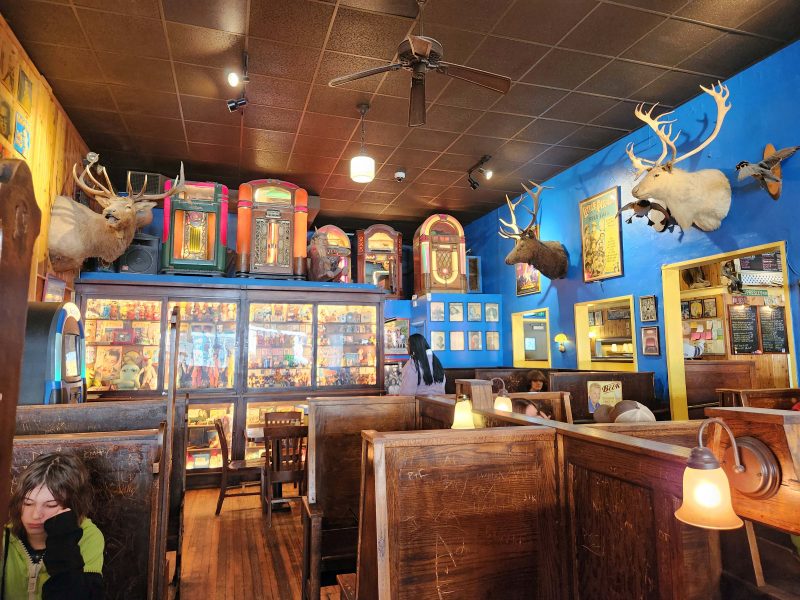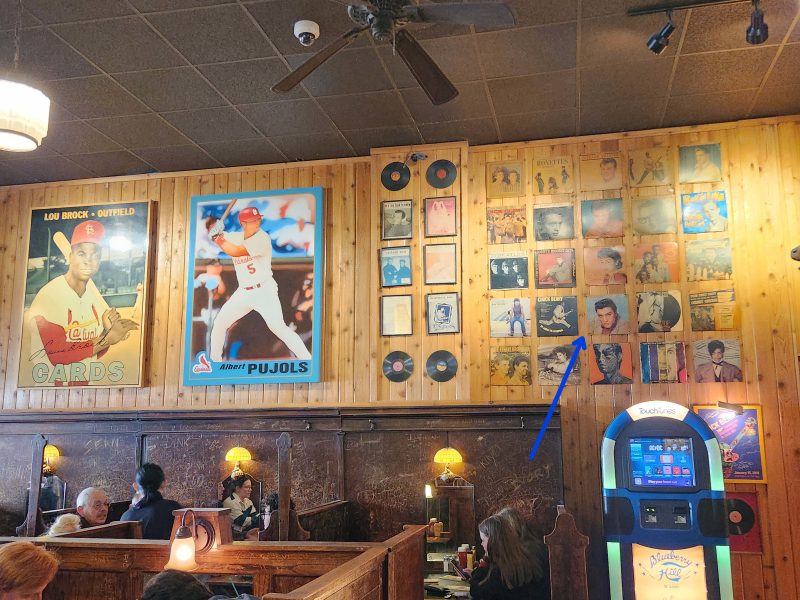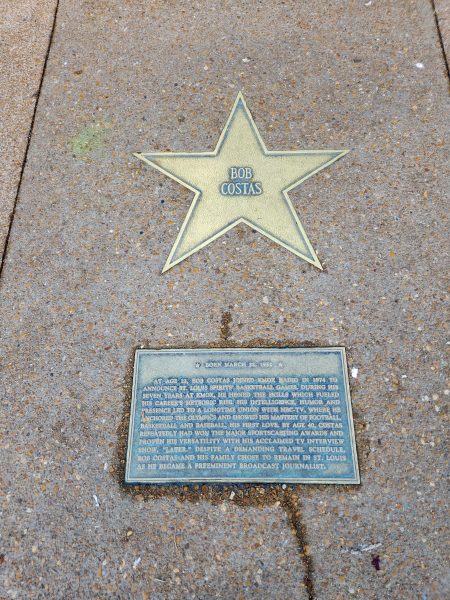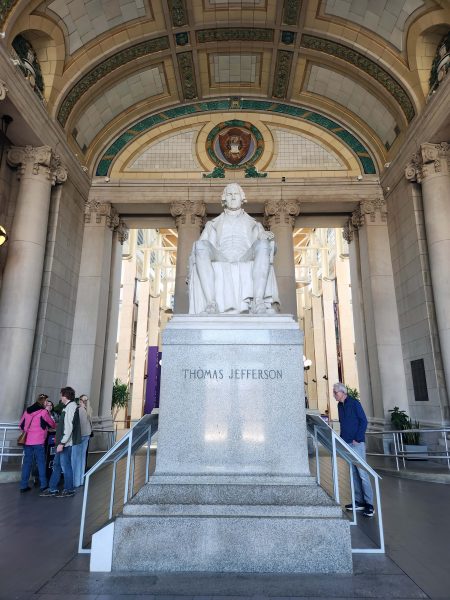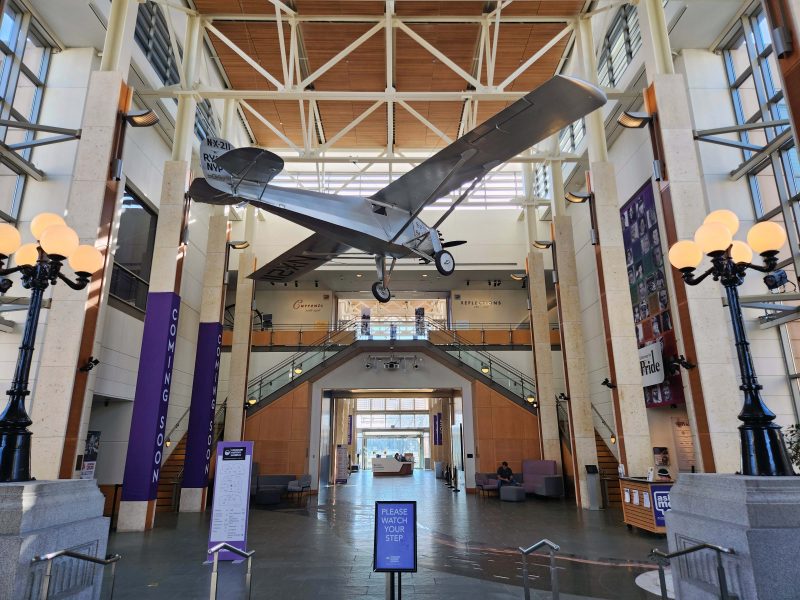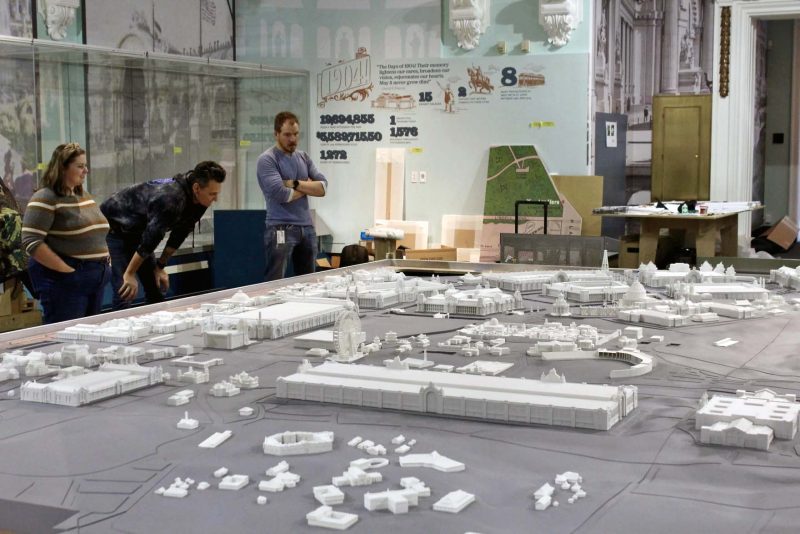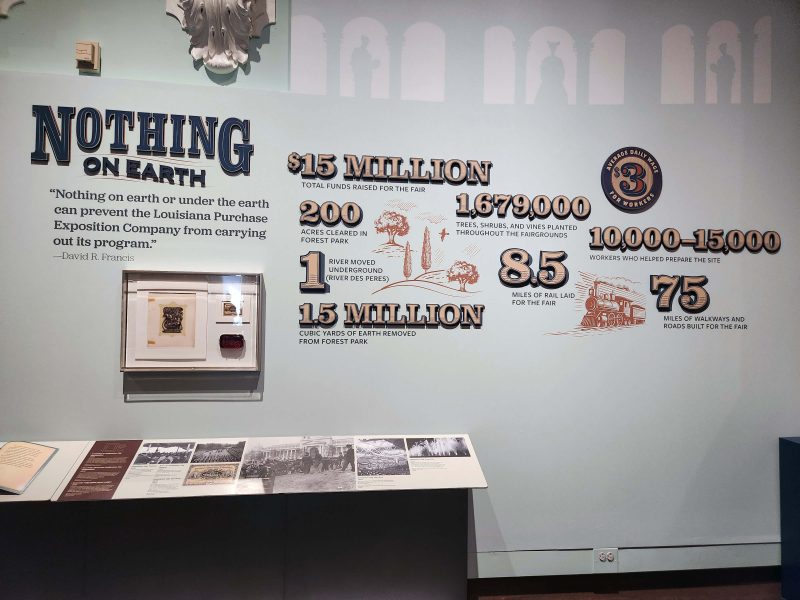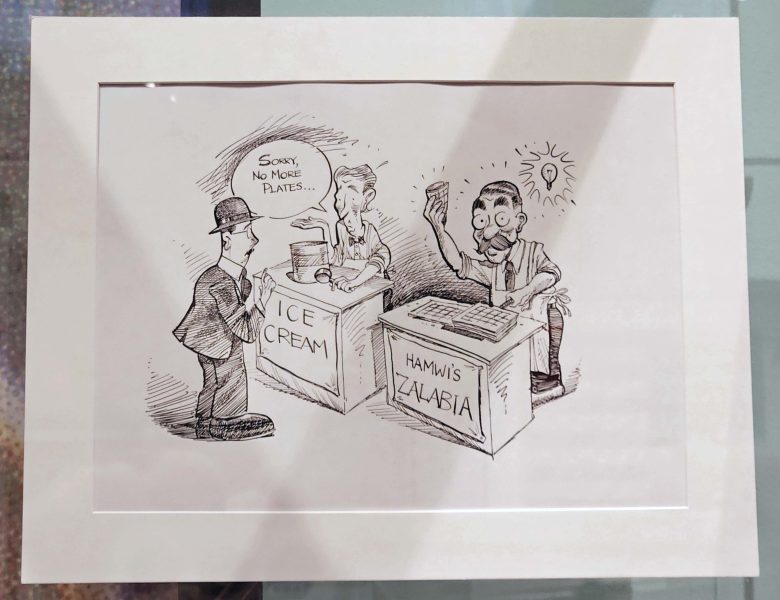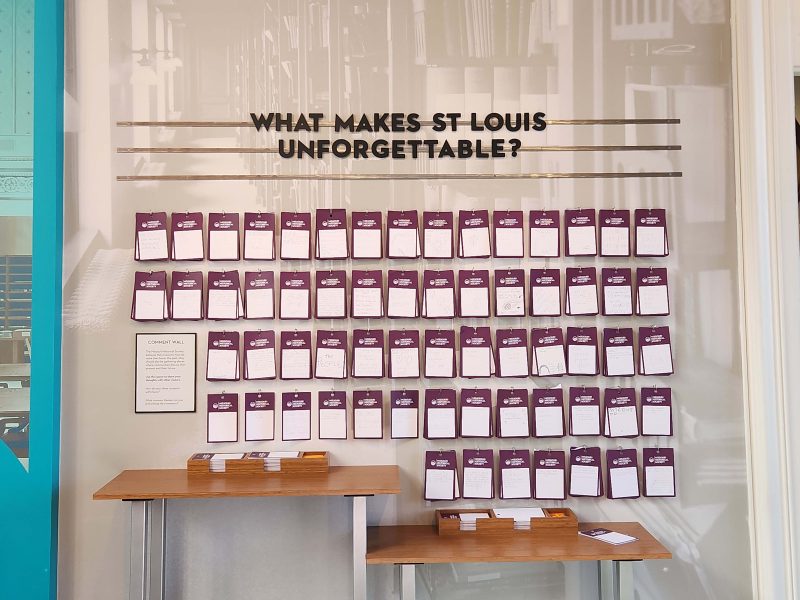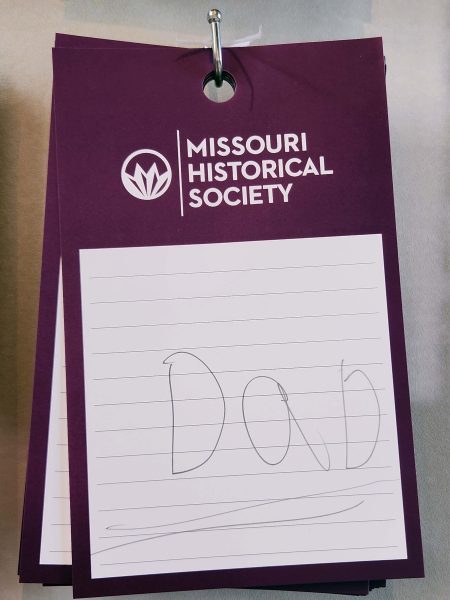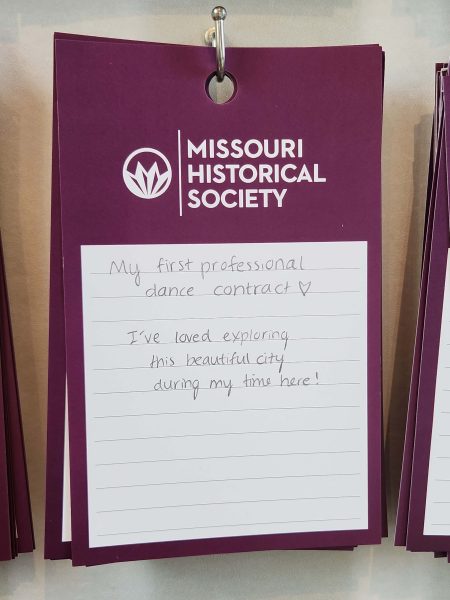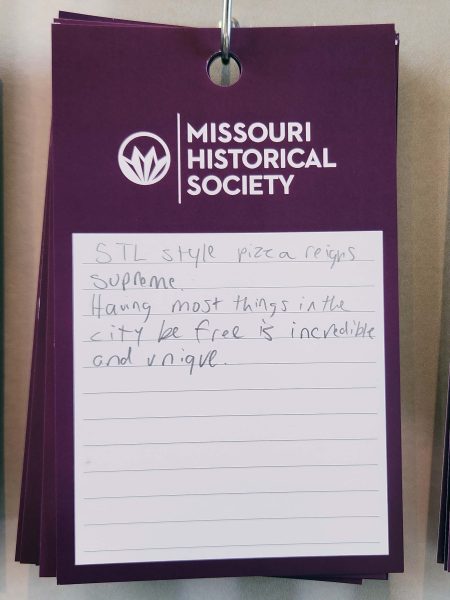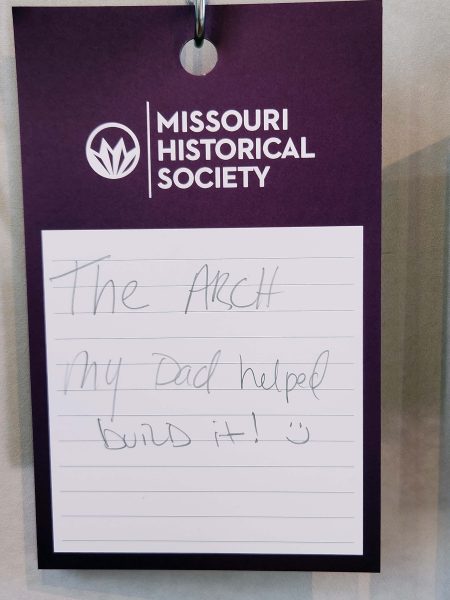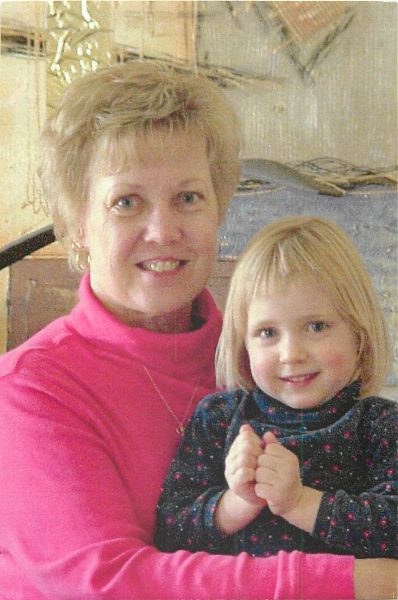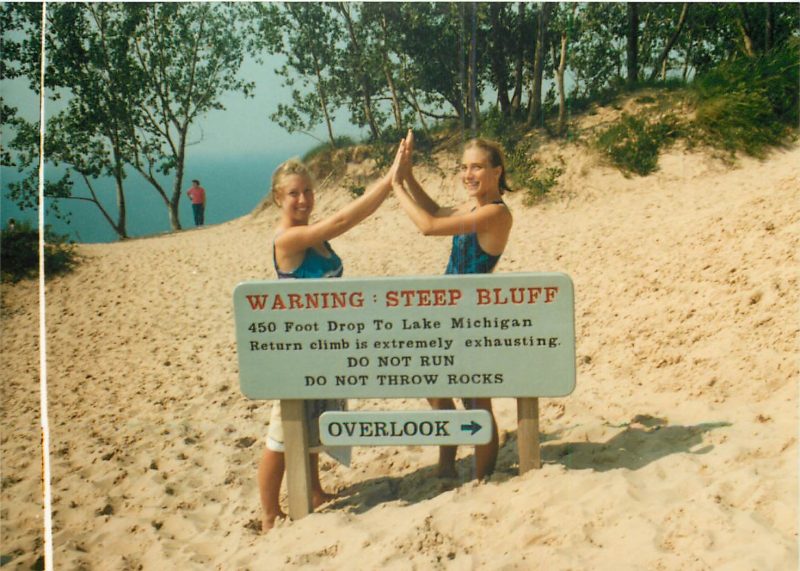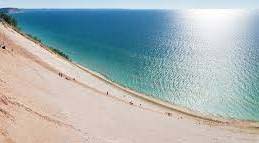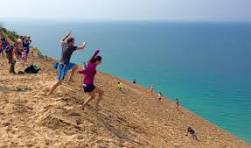Today, after Jeff and La returned from church, the four of us had a lengthy and interesting discussion related to solving several national and world problems. Jeff has a unique idea for getting rid of daylight saving time (in which no daylight is actually saved) as well as standard time. Ask him about it.
When we felt the world was in order, we had lunch and headed for Salvation Mountain.
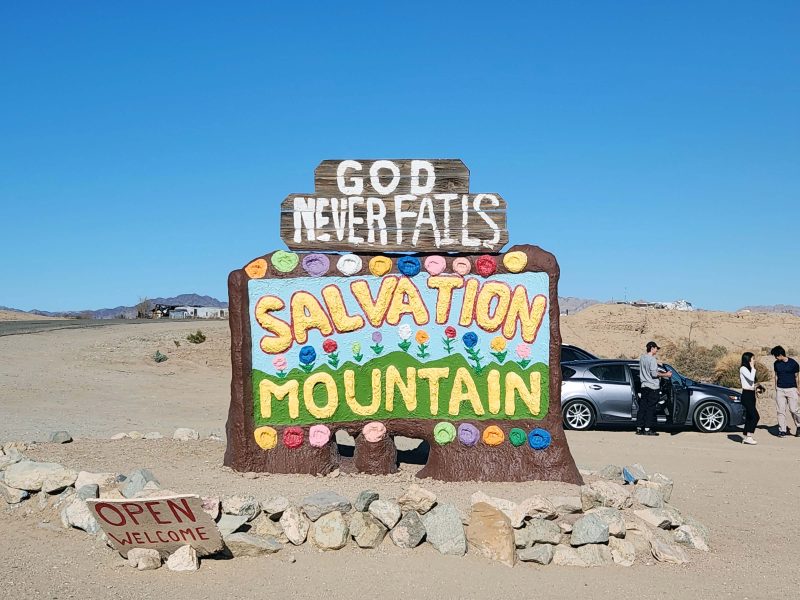
According to the handy brochure, Leonard Knight began creating Salvation Mountain in 1989 in Niland, CA, near Slab City. His building materials included adobe clay, straw, tree limbs, tires, windows, and lots of colorful paint. All of these items were found lying in the desert or at the local dump. Leonard’s plan was to paint the mountain twice a year, hoping the thick layer of paint would keep the site in good condition so that many people could see it for many years. (That explains the plethora of paint cans around the displays.) Perhaps not surprisingly, Leonard’s first mountain collapsed. As he began rebuilding it, he proclaimed, “No, God, You build it.” Today, we saw the result.
In 1994, Imperial County attempted to have the mountain torn down, but members of the art community all over the United States and around the world united to save the monument. In 2001, Salvation Mountain was designated a National Folk Art Site; in 2002, it was named a National Treasure in the Congressional Record; and, in 2007, it was featured in the film Into the Wild. Leonard believed people need to start loving God more. He often said, “Love is universal. Love God, love one another, and just keep it simple!”
Salvation Mountain is a colorful sight in its brown desert surroundings. Notice the waterfalls, the rivers, and the Sea of Galilee.
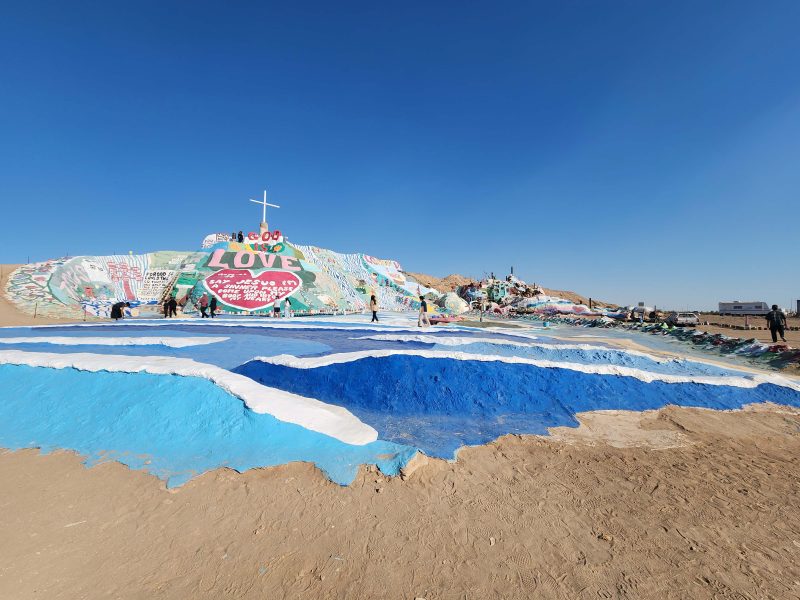
I don’t know how much mail God gets, but here’s a mailbox for it. The lumpy multi-colored blob on the right is the museum.
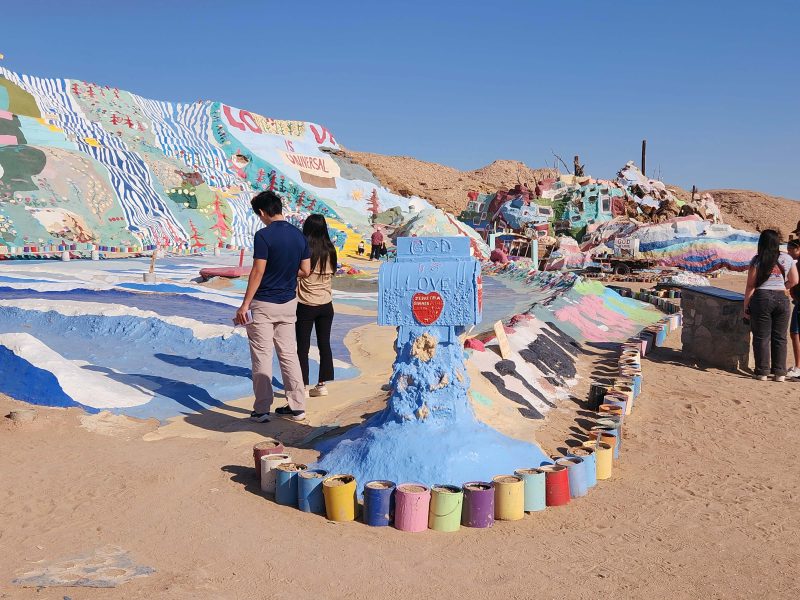
This is a close-up of the museum entrance. It’s closed because there is a danger that the top is going to cave in. The arrow in the photo points to one of many cracks in the dirt structure. If you look, you’ll see several more cracks. There are plans to repair the museum and to re-open it, but Salvation Mountain is dependent on donations and volunteers and cannot be repaired at this time. A public charity, Salvation Mountain, Inc., was established to continue maintenance on the site. No government aid is accepted.
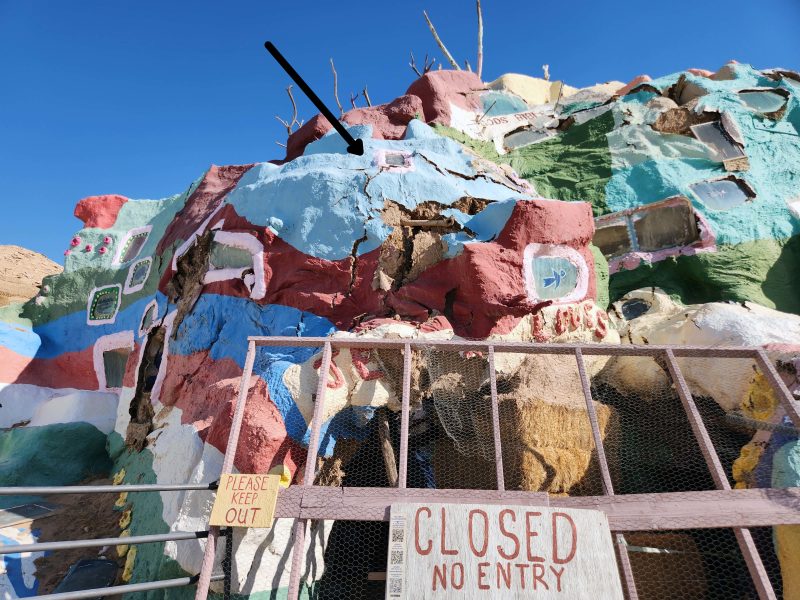
You can “follow the yellow brick road” to the top of the mountain. Jeff and La went all the way to the top via this route.
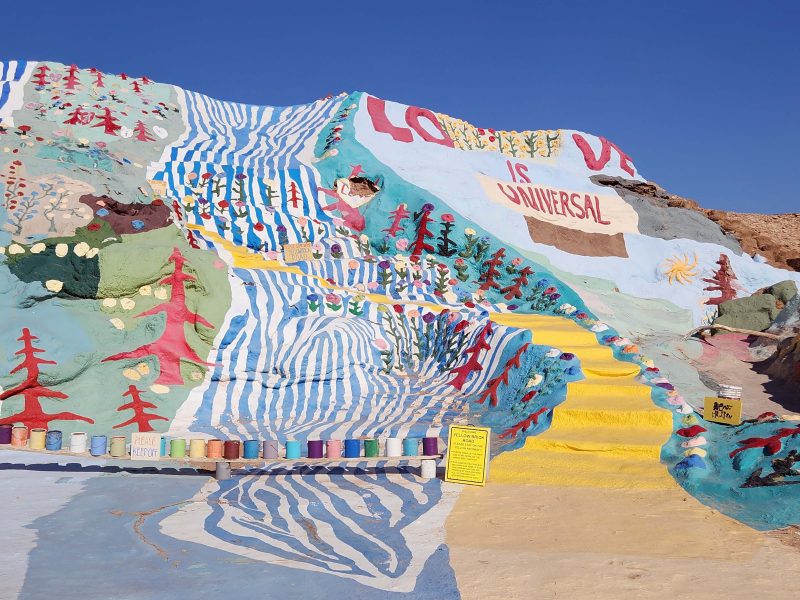
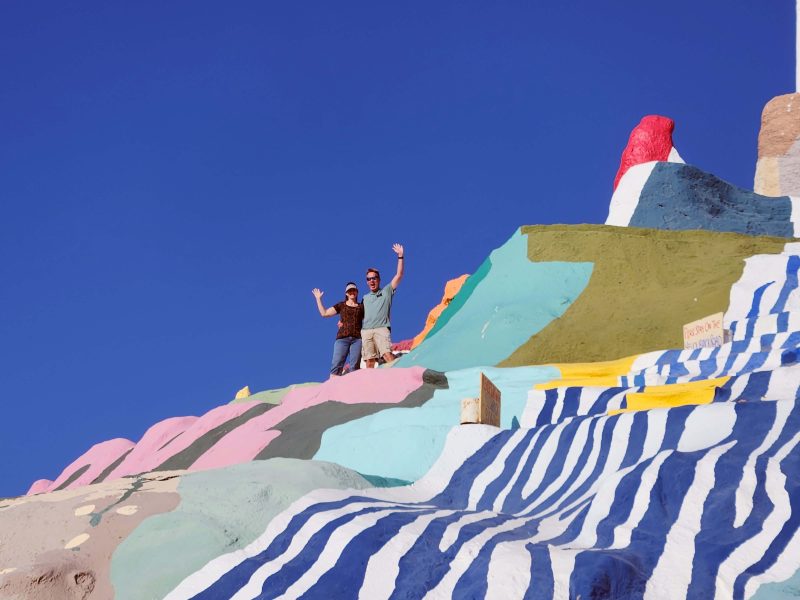
I made it across the first river before the edge of the yellow brick road came too close to the edge of the mountain for my comfort. I wasn’t in a Jack and Jill tumbling mood, so I chickened out and backtracked. I don’t like to be at the edge of high places unless there’s a large, firm platform under my feet with a protective railing around me. Luckily, on the other side of the mountain, there was a more gently ascending dirt trail to the top. Ted accompanied me to the top via that less scary route.
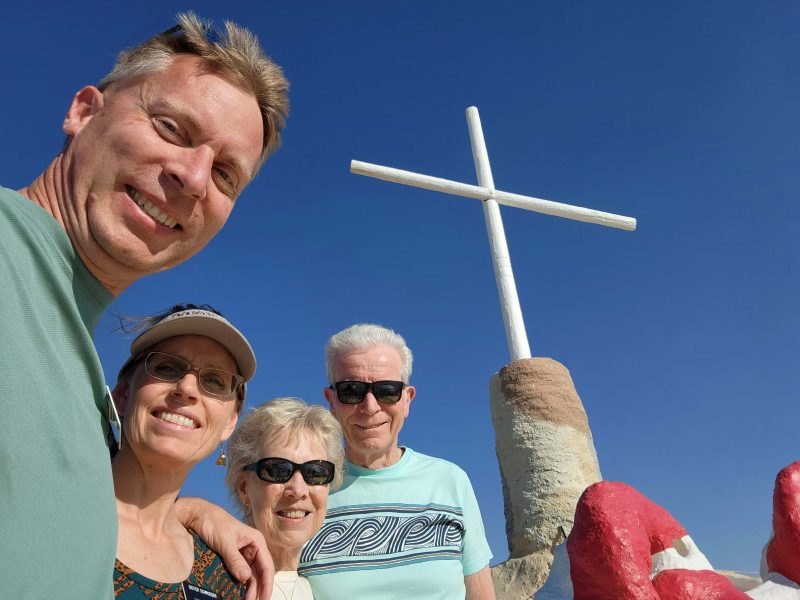
The Salton Sea was visible from the top of the mountain. It’s the flat, narrow light blue streak running across the upper center of this picture. The Salton Sea is a shallow, land-locked, highly saline lake that lies on the San Andreas Fault. In the 20th century, it was a resort destination, but contamination from fertilizers and clouds of toxic dust, plus evaporation, caused die-offs of fish and birds in the 1980s.
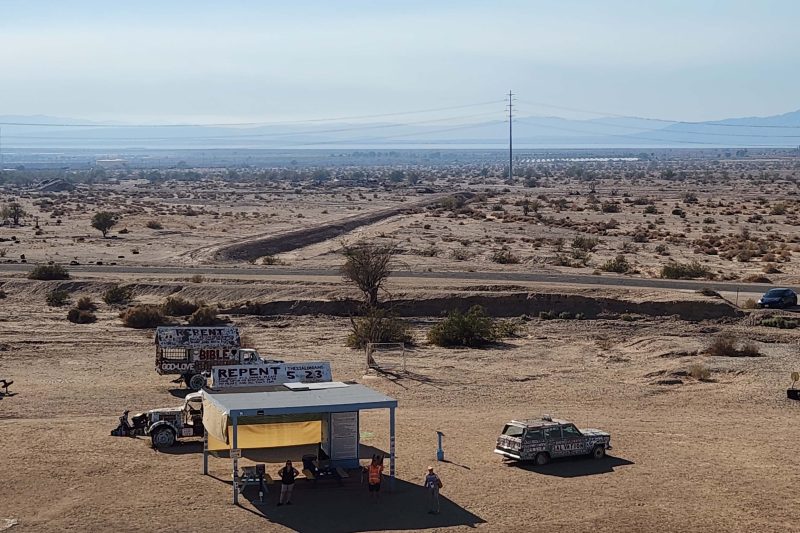
There are a number of vehicles–cars, trucks, farm machinery, a boat, etc.–on the grounds. All of them (except the boat) have flattened tires and all of them are colorfully painted with scriptural messages.
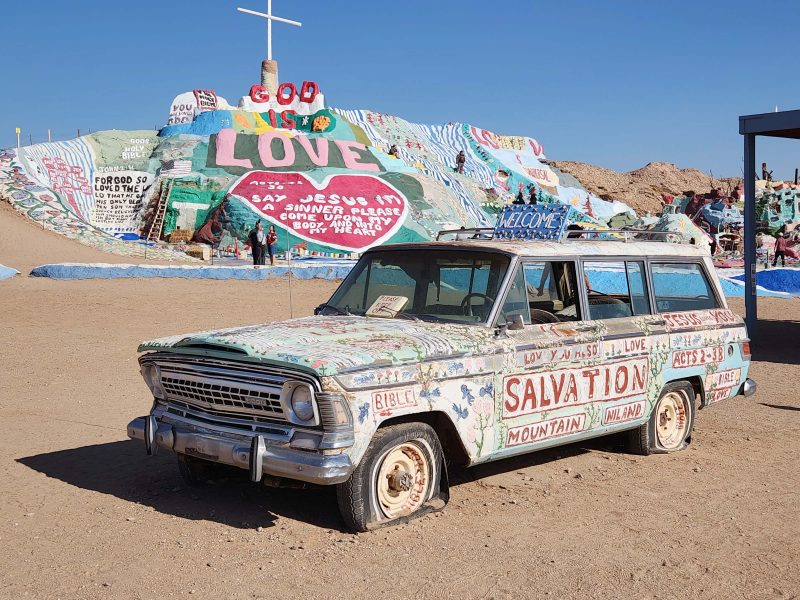
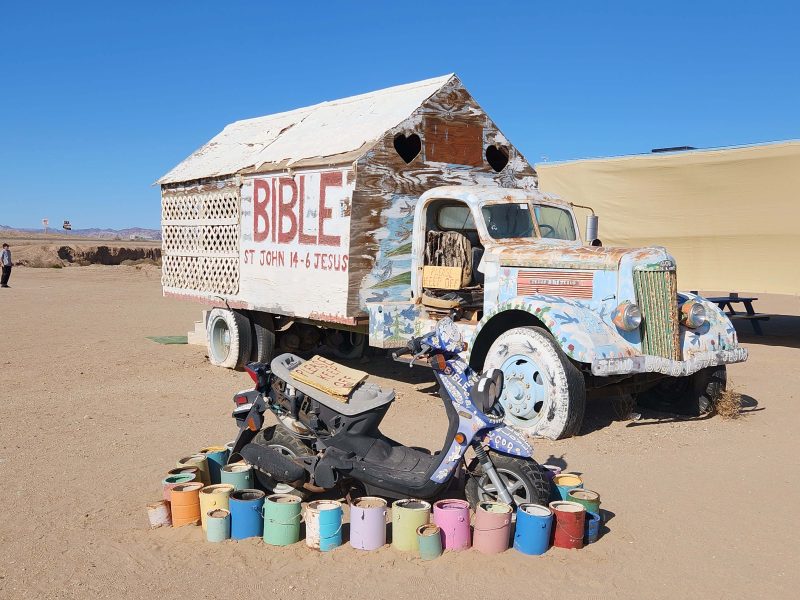
This is a view of Slab City, a community adjacent to and north of Salvation Mountain. Slab City took its name from the concrete slabs that remained after the World War II Marine Corps Camp Dunlap training camp was torn down. The community is known for attracting people who want to live outside of the mainstream society (i.e., off the grid).

The trailers and campers behind Leonard’s “flower garden” in this picture might be a southern suburb of Slab City. Some of the volunteers who maintain Salvation Mountain live here.
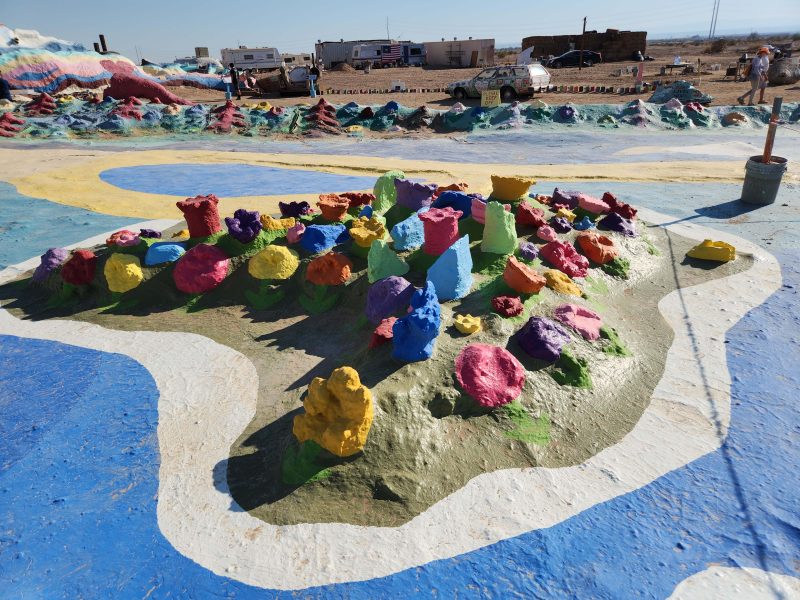
On our way back to El Centro, we stopped in Calipatria, a “low-down” town. At 184 feet below sea level, it is the lowest incorporated town in the Western Hemisphere. (Badwater Basin in Death Valley National Park is lower at -282 feet, but no one lives there.) The local joke in Calipatria is that its residents have to pray harder because they are closer to hell.

Calipatria’s claim to fame is its freestanding flagpole, at one time, the World’s Tallest Flagpole. At 184 feet tall, its flag flies at sea level. It can be seen from as far as three miles away and, as the sign says, it’s “Dedicated to good neighborliness”–a kind and friendly ideal.
Note: Calipatria’s flagpole is no longer the tallest flagpole in the world. Currently, the world’s tallest flagpole is 662.57-ft. tall and was built in Cairo in 2021. The 400-ft. tall Acuity Insurance Flagpole in Sheboygan, WI is now the tallest flagpole in North America. It is also one of the world’s tallest free-standing flagpoles.
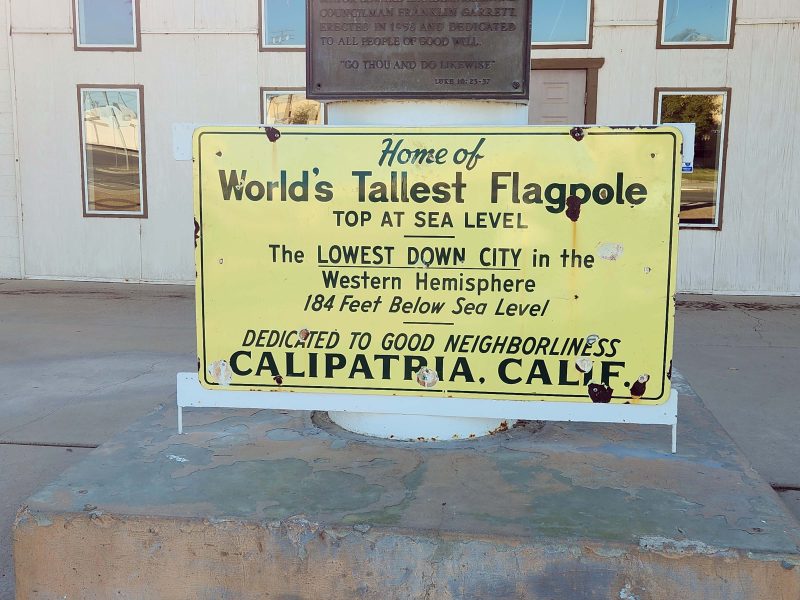
Calipatria’s flagpole has an interesting backstory. The flagpole was built to honor Takeo Harry Momita and his wife, Shizuko Helen Momita. The Momitas were a Japanese-American couple who lived in Calipatria. They and their three children had been incarcerated at the Poston War Relocation Center in western Arizona during World War II under Executive Order 9066 signed by President Franklin D. Roosevelt. The order imprisoned 120,000 people of Japanese descent–two-thirds of whom were American citizens.
When Mrs. Momita was killed in a car accident and Mr. Momita was hospitalized for injuries he sustained in the accident, Calipatria residents operated his pharmacy for him and collected $500 for Mrs. Momita’s funeral. Mr. Momita said his wife would not want an elaborate funeral. Instead, he offered to donate an additional $500 of his own savings toward something the city wanted but could not afford: a flagpole reaching up to sea level.
The story made national news and donations poured in. President Richard Nixon sent a flag that had flown over the U.S. Capitol, and Pacific Southwest Pipe Co. of Los Angeles offered to erect the flagpole at cost (about $10,000).
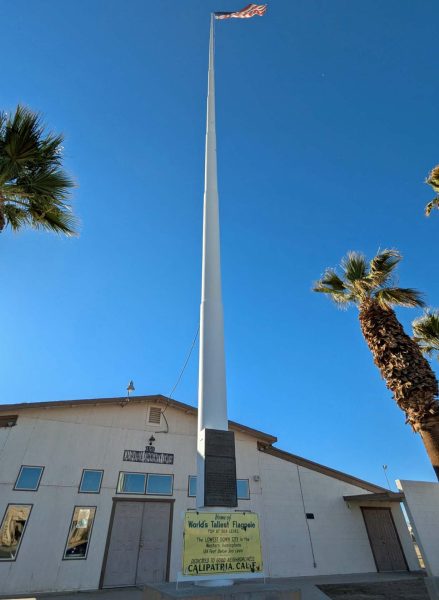
What a nice way to end our visit with Jeff and La. In the past five days, they took us to all the interesting places I’ve been writing about and they were outstanding tour guides. We had lots of good times together, good food wherever we ate, good family time, and loving hospitality. It was great to spend this time with them.
